Nature’s Best Photography Asia
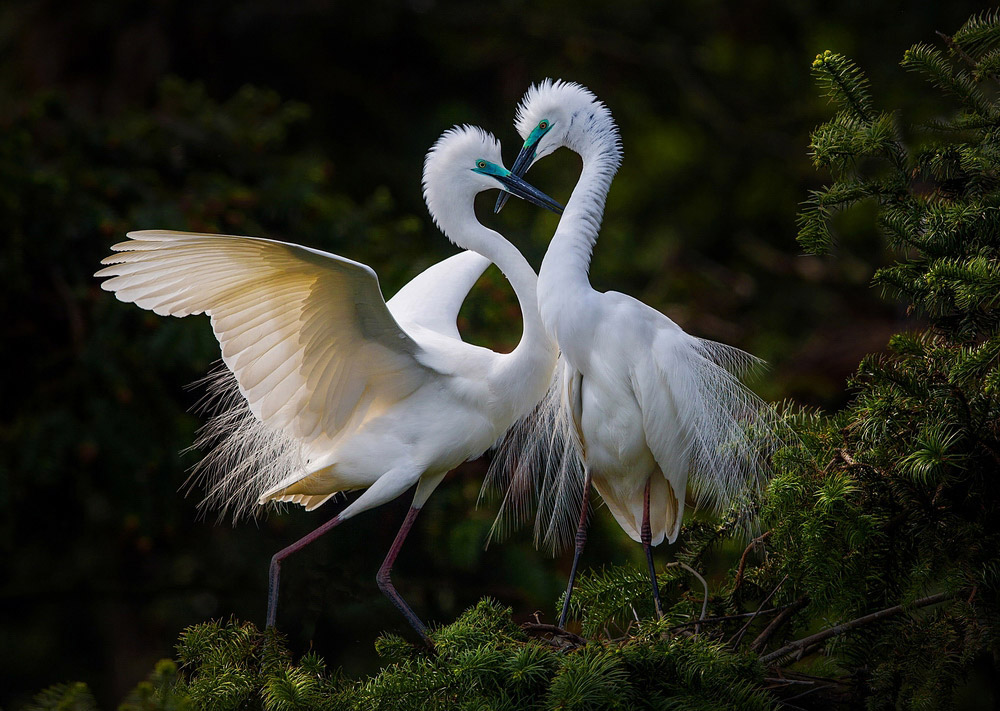
© Xu Yong, Shanghai, China
Grand Prize
There was no sunshine at the time I found a pair of egrets about 100 meters ahead of me on the balcony of a peasant household. The pair of egrets are staring at each other with deep affection. They often reveal intimate movements. When the egret expresses love, their head and neck cross to form two heart shaped characters which symbolizes the egrets love.
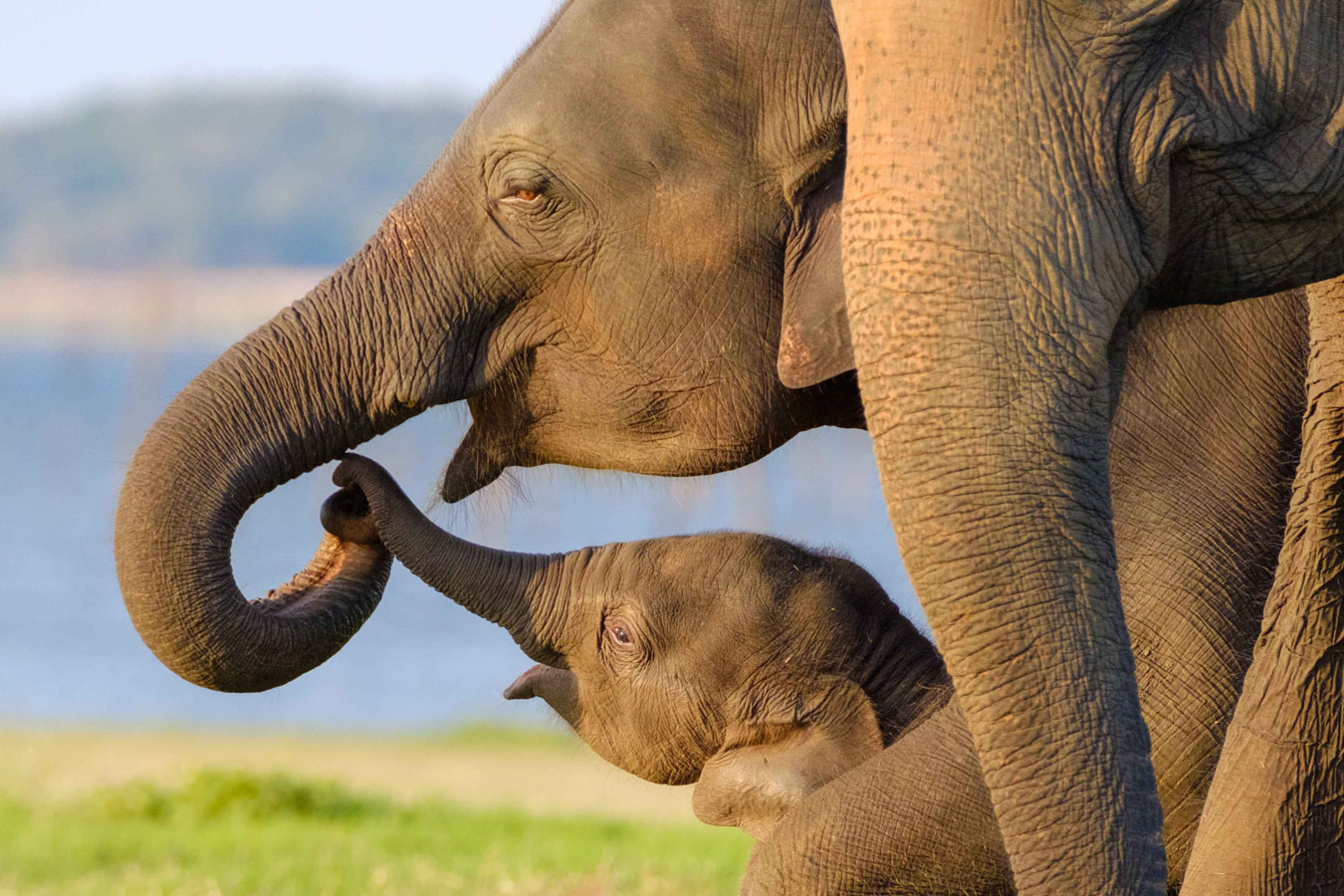
© Shin Okamoto, Tokyo, Japan
Lumix Award
In Sri Lanka before the colonial period there were 40,000 Sri Lankan elephants. Due to overhunting during the colonial period that number has been drastically reduced down to about 5,000. However poaching still continues. The Sri Lankan elephant has a tragic history but on one eve-ning last summer I has able to take this photo of a parent and child in a heard. When I saw this scene I thought, “humans should not disturb them anymore”. This was a lovely scene filled with peace and affection.
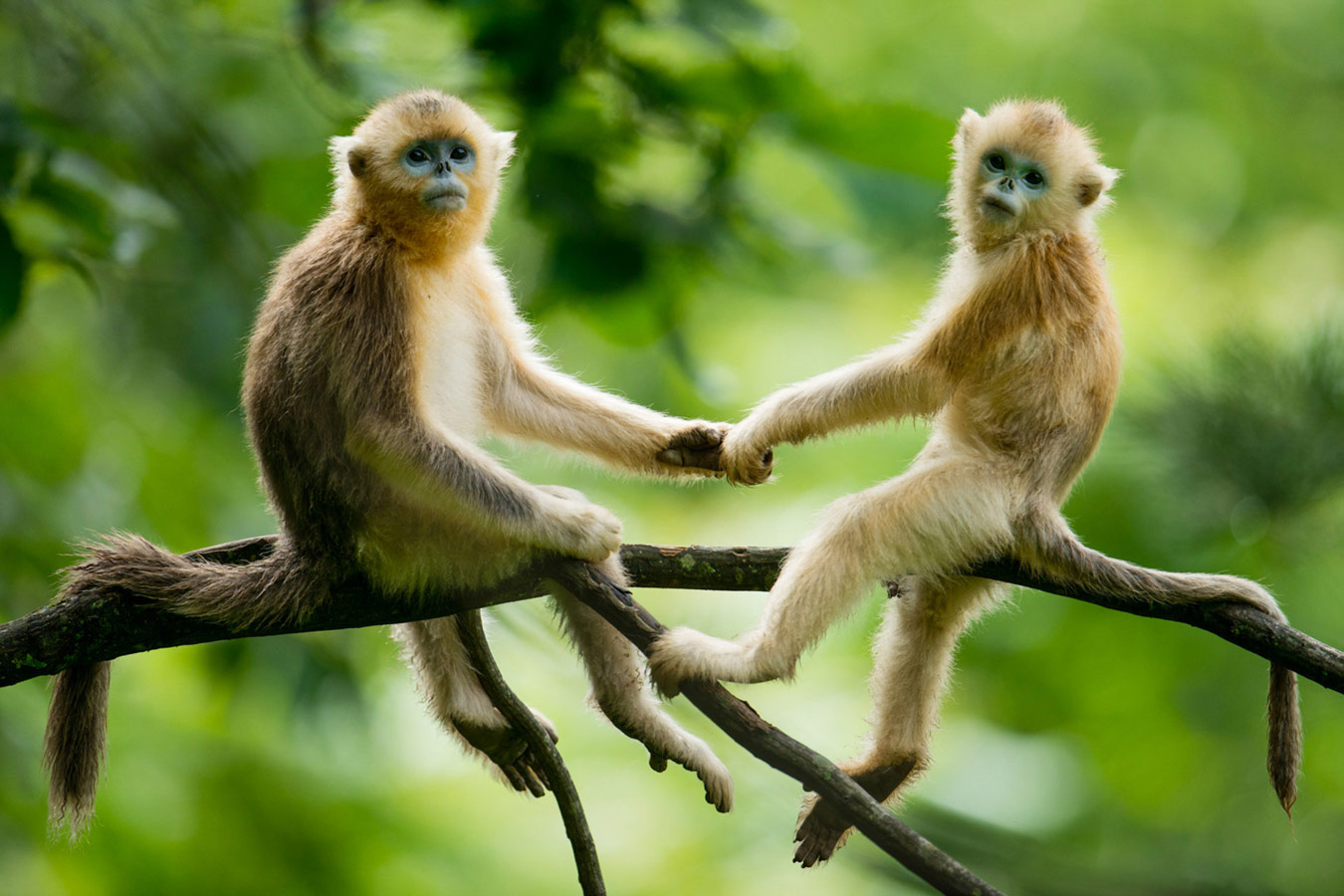
© Kuanliang Ding, Xi’an, China
Sigma Award
After a heavy rain in the Qinling Mountains, two golden monkeys jumped from the canopy and shook hands on a branch, which is a friendly expression of monkey evolu-tion. Qinling golden monkeys are also known as Sichuan golden monkeys. Their body is full of blond hair, with a pale blue face and a thick mouth. The Sichuan golden snub-nosed monkeys inhabit the deep mountains of China’s Qinling Mountains and Shennongjia Mountains in Hubei Province. The social structure is polygamy. They live mainly in the trees. Their main food is tree buds, leaves, moss, and bark.
Wildlife Category
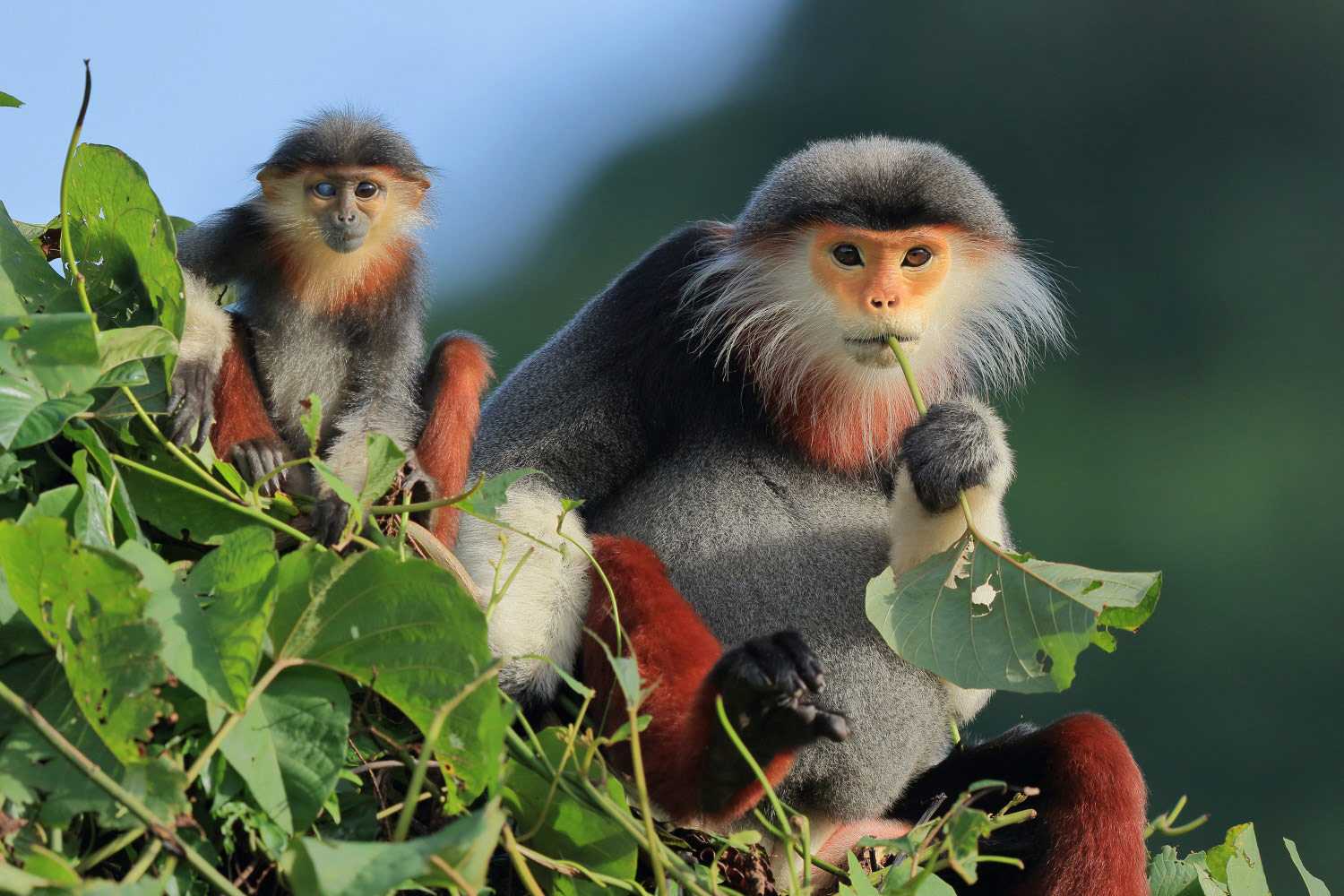
© Tatsuya Okuda, Tokyo, Japan
Winner Wildlife
I have visited Son Tra Nature Reserve in Vietnam three times within six months since last September to spend time with red-shanked douc families because I’ve been enchanted by their expressive facial signals and peaceful behaviors. I’ve become famil-iar with this father and his young one because I’ve identified this young one by its right eye which became cloudy. I suppose that the baby has no sight in his right eye. Whenever I come across them, the father seems to protect his baby in a gentle manner and his young one always follows its beloved father. This time I saw them while they were eating their favorite leaves in the forest. Red-shanked douc is on the IUCN Red List as Endangered (EN). It can only be found in very limited areas in Southeast Asia. This natural habitat is highly critical for the continued existence of this endangered species and needs to be protected from potential resort development projects.
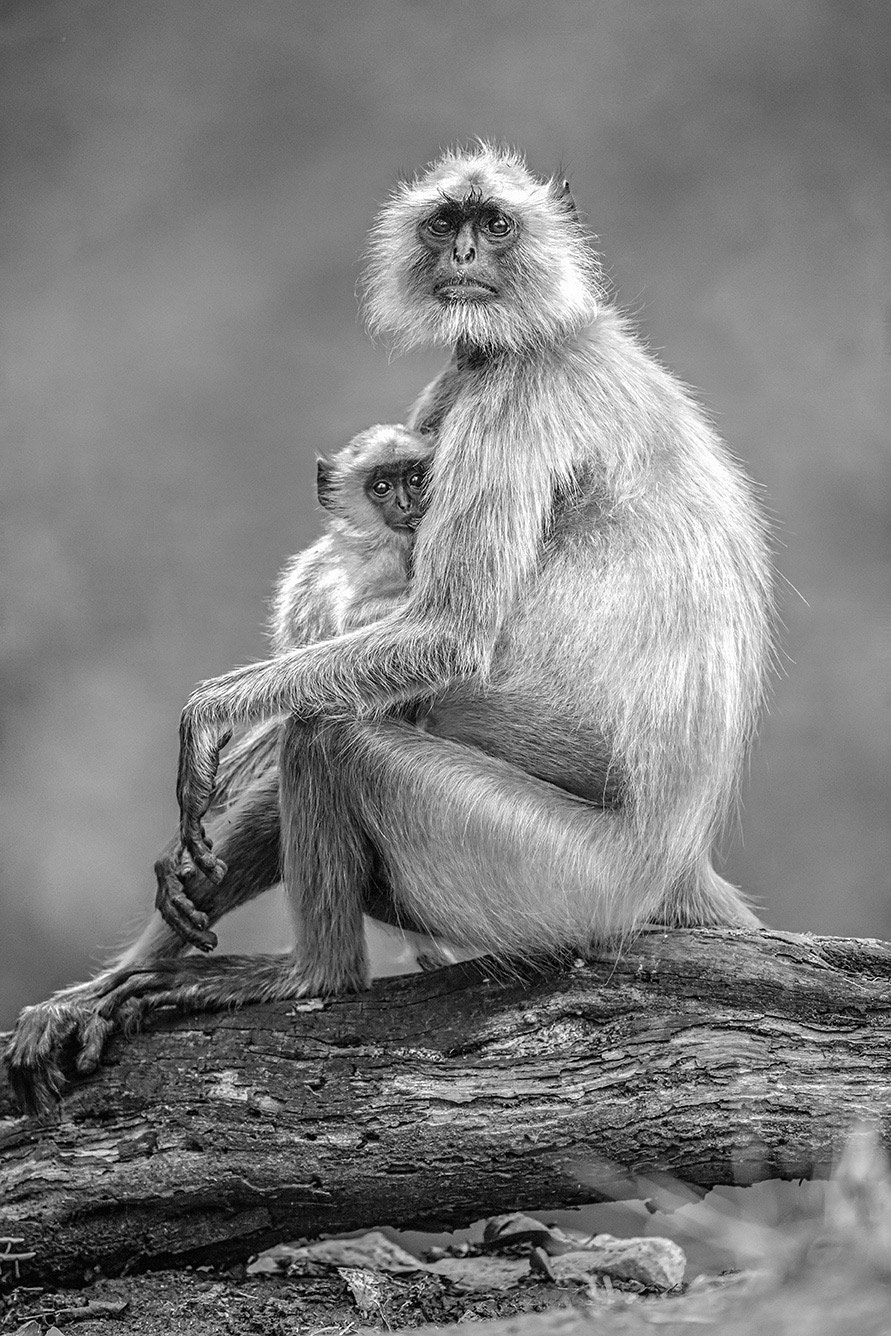
© Adwait Aphale, Kolhapur, India
Highly Honored Wildlife
Hanuman langurs are the best subjects to capture especially when accompanied by baby langurs.I always wanted to capture a mother and baby langur relationship in the wild. I have always been curious how they behave and I got the opportunity to take this image at Pench National Park while waiting for alarm calls. It is pretty difficult to capture them as they keep on moving and jumping every second. I have made several failed attempts to capture an image of a baby on its mother’s lap. After so many failed attempts when I heard the alarm call of a sambar deer suddenly the baby langur went straight to it’s mothers lap and started suckling. I made no mistake in capturing it in the best possible way. A wait of almost one hour had paid off.Capturing emotion in the eyes of the mother and baby was a very difficult task in such low light with an overcast sky.
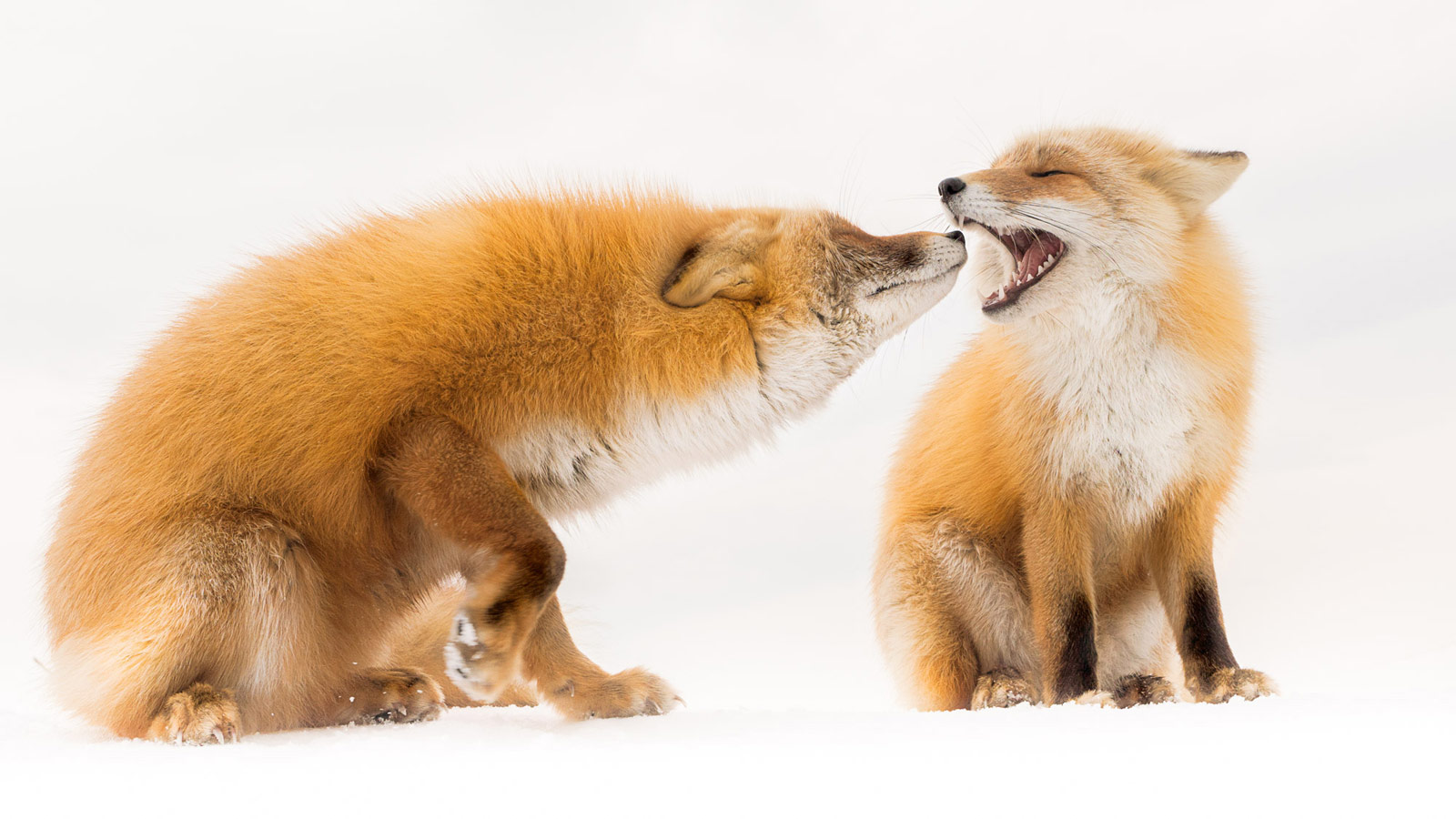
© Yoshihiro Abiko, Hokkaido, Japan
Highly Honored Wildlife
The Noge peninsula in Hokkaido is a paradise where various wild animals live. On this day, I was able to capture these two northern foxes. Who won or lost this fight was deter-mined by comparing the size of their mouths this way they could avoid a real physical conflict. This is an important behavior to keep good relationships between foxes. When the game was over they parted ways. It was a freezing day where the cold of winter still remained but I was lucky to see this heartwarm-ing scene.
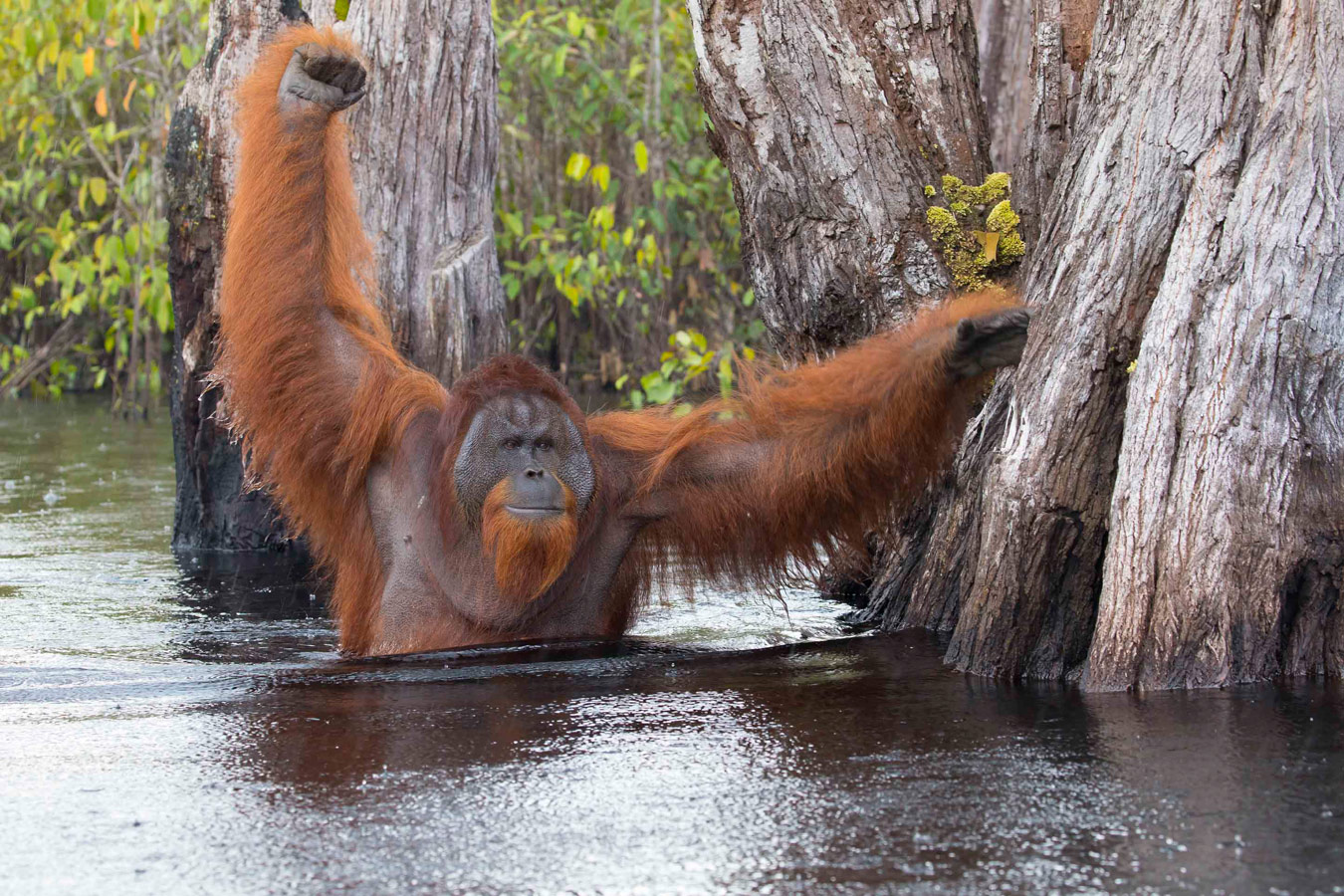
© Jayaprakash Bojan, Singapore
Highly Honored Wildlife
In August 2017 I was in Tanjung Putting National Park, Kalimantan, Indonesia looking for orangutans and proboscis monkeys for my book on primates of Southeast Asia. I lived on a small house boat for about a week searching around the river. One morning two days before I had to leave I was talking to my guide and local rangers and one of them happened to mention that he had seen an orangutan cross the river in another location a few months ago, I knew this was rare and a natural history moment if I could get this on camera especially since orangutans hate water. They gave us the location details and we got there early the next morning hoping to find him. After two days of waiting around the same area one morning one of the rangers on night patrol came by and told us that he saw the orangutan on the opposite side of the river about 200 meters away from where I was and there could be a possibility of him crossing the river. I was very lucky to have seen this very rare event.
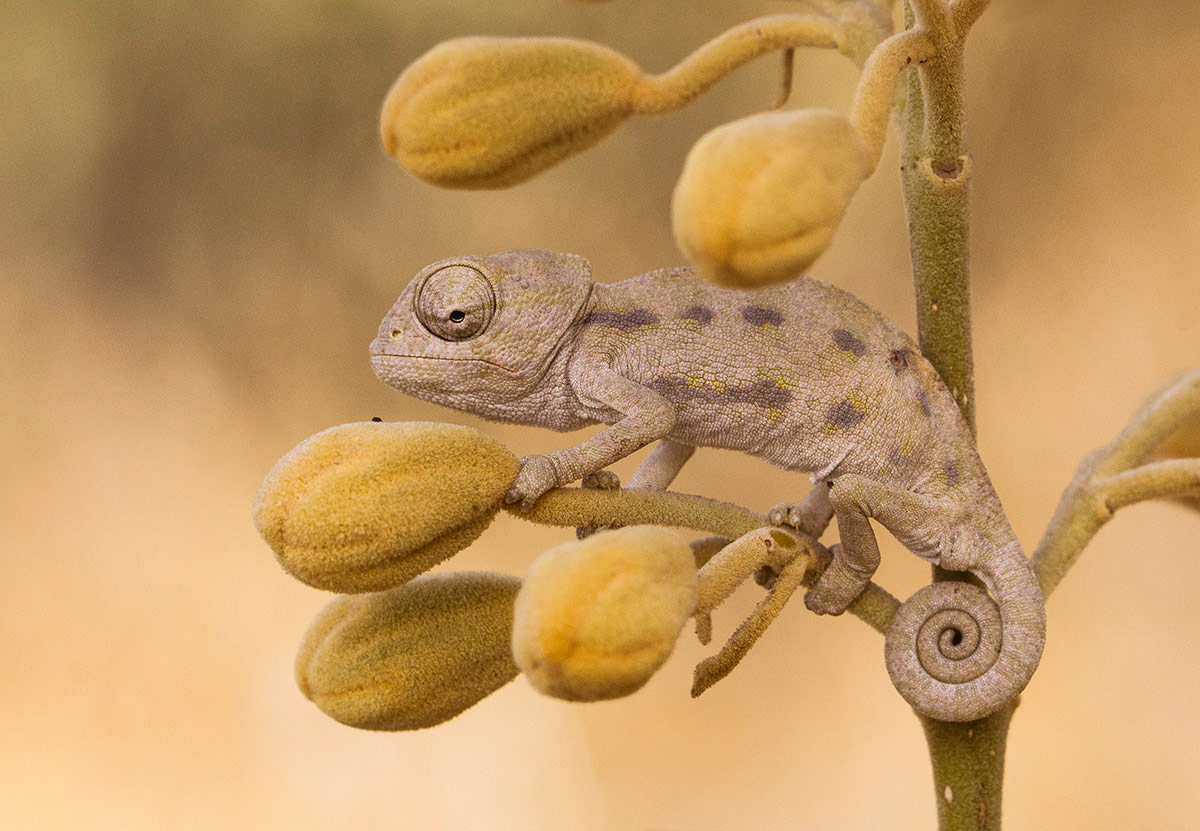
© Rebecca Levisman, Raanana, Israel
Highly Honored Wildlife
This is a photo of a Mediterranean chameleon on a Paulow-nia fortunei branch on a sun-drenched day at noon. The photo shows its prehensile tail, which assists it in cling-ing to branches, and one of its cone-shaped eyes. Chameleons can move their eyes separately and look in opposite directions simultaneously, which accords them a unique vision capacity. When a chameleon locates its prey with one eye, it moves its head in the direction of its prey, directs both eyes, and then sees its exact location.
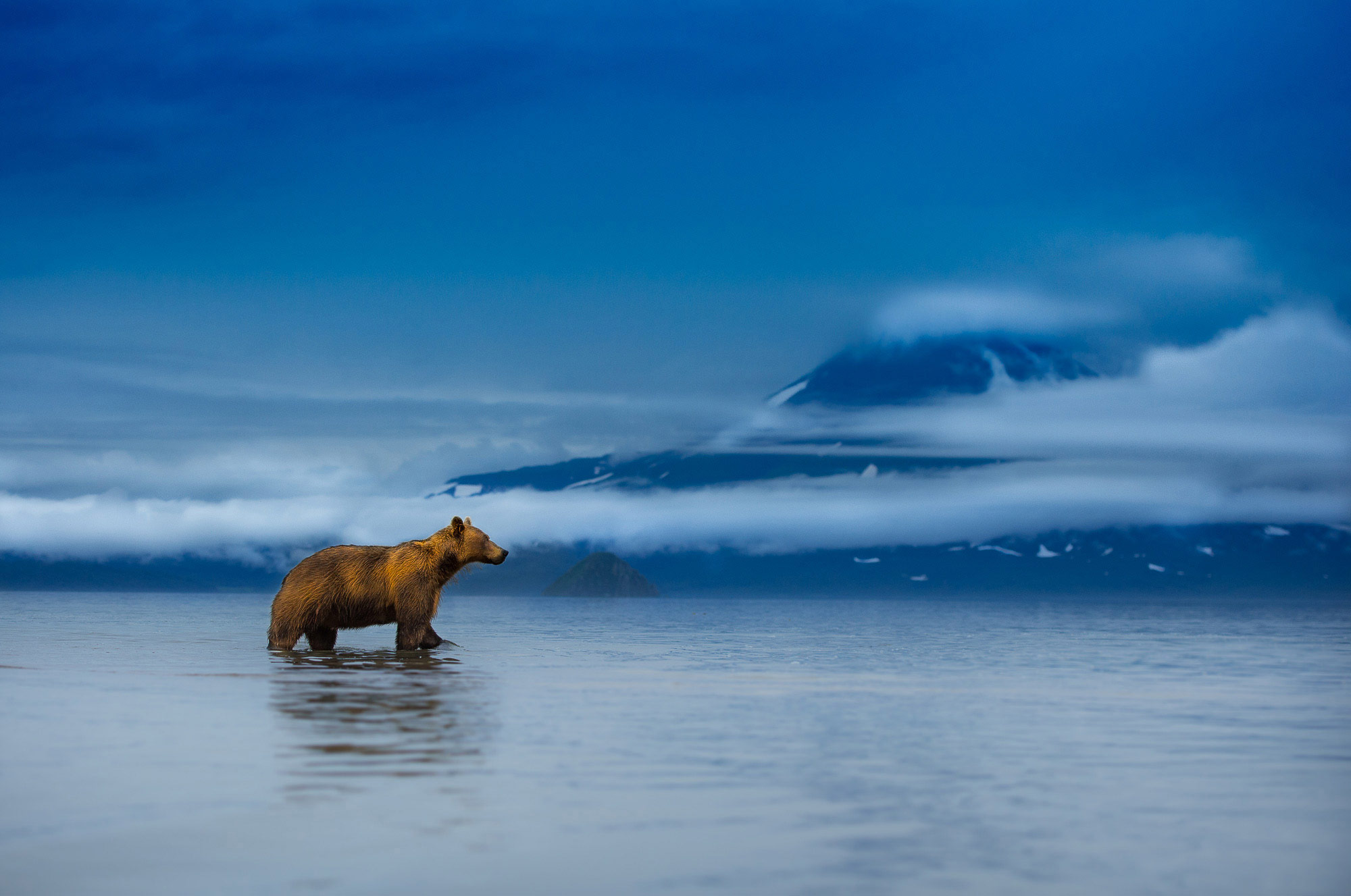
© Thomas Vijayan, Dubai, United Arab Emirates
Highly Honored Wildlife
Landscape Category
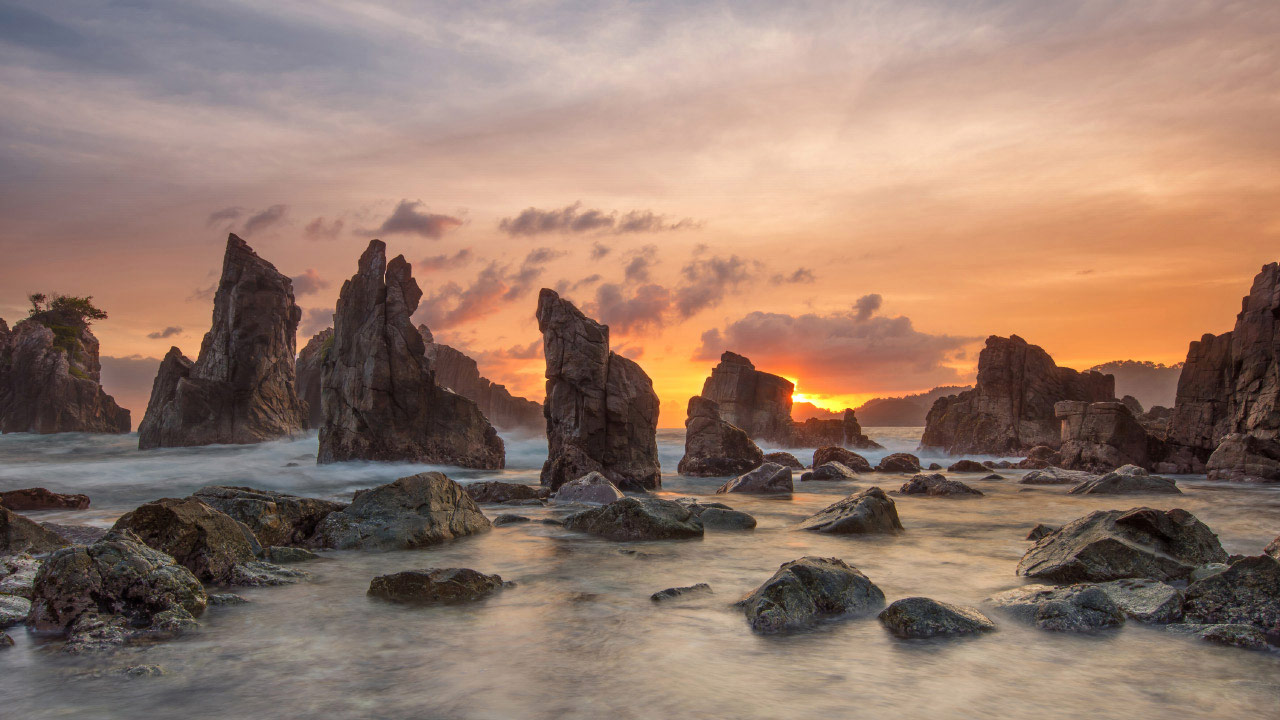
© Gunarto Song, Jakarta, Indonesia
Winner Landscape
This photo was taken at Pegadungan Beach, Sumatera, In-donesia an area noted for its exotic and rarely visited beaches. To reach this spot it took four hours from the city of Bandar Lampung by car, a one hour motorcycle ride traveling over damaged and sometimes dangerous roads then a 15 minute walk. This photo was taken with a single shot.
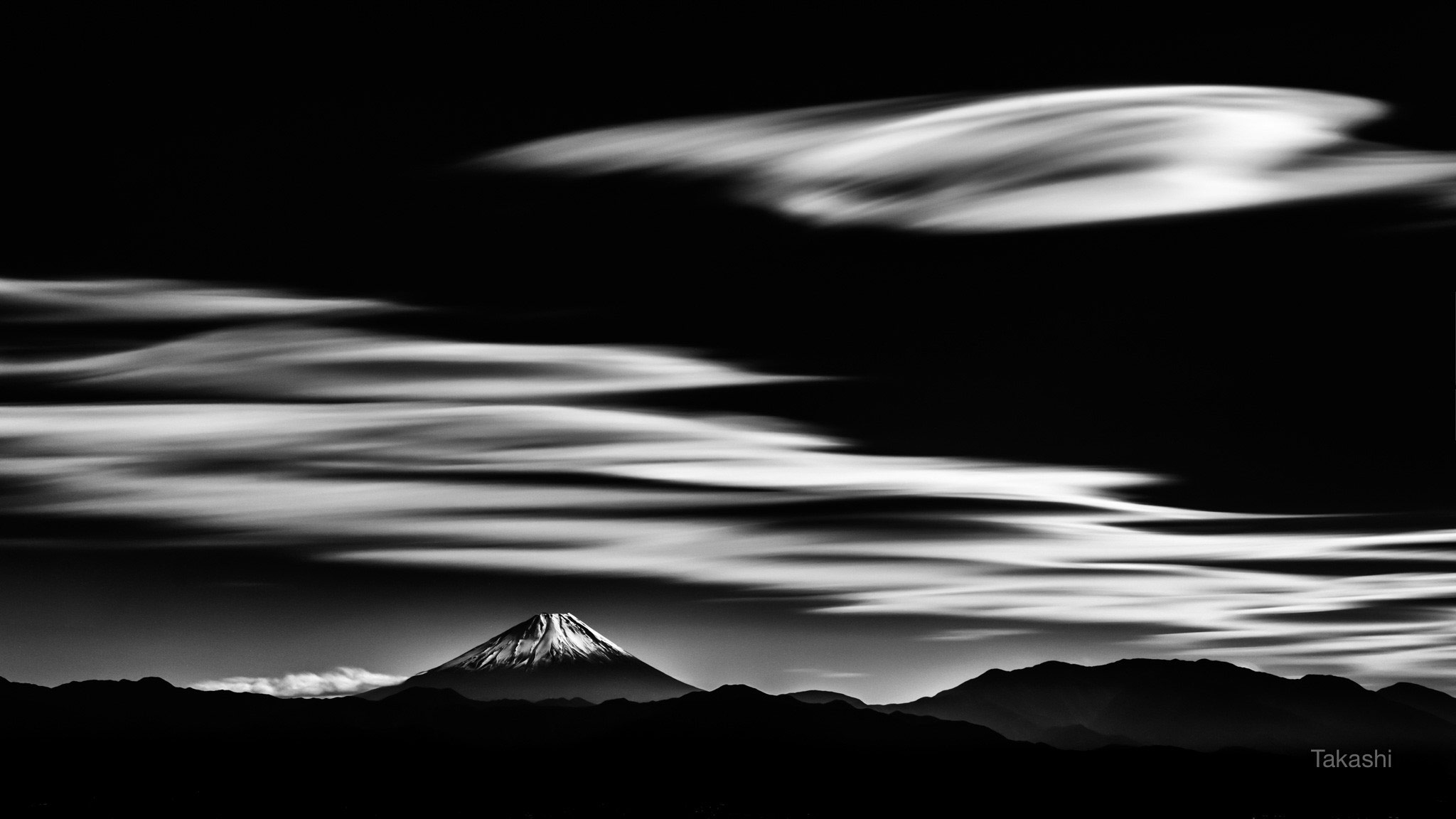
© Takashi, Tokyo, Japan
Highly Honored Landscape
On a sunny winter day while driving through a forest in Yamanashi Prefecture I came upon an open space where I could see Mt. Fuji. Strange shaped clouds were gathering and flowing over the summit of Mt. Fuji. It was a very impressive and unusual site. I photographed it by using a long exposure and converted it to black and white. It is a very wonderful and impressive photograph and makes me feel as if I were on another planet. It was an amazing and wonderful scene of nature.
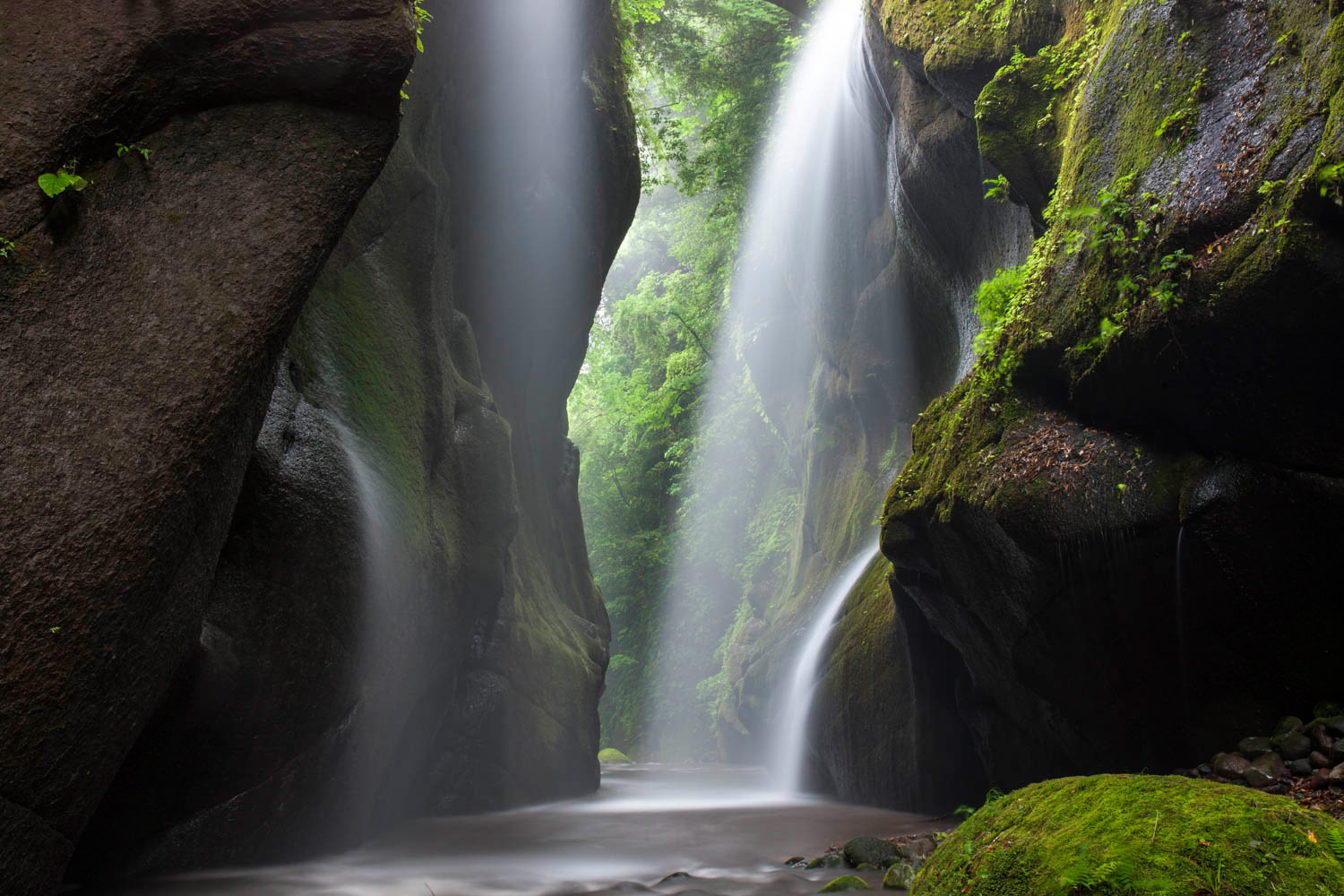
© Keisuke Iwamoto, Sapporo, Japan
Highly Honored Landscape
Yufu River Gorge is a 15 to 60 meter deep canyon that has been eroded by the Yufu River. The face of the canyon walls are smooth rock and the area has a total of 40 water-falls creating a unique landscape. The day I took this photo the rain that had started in the morning caused the Yufu River to rise. The usually thin small waterfalls also gained momentum be-cause of the rain and I was blessed with a scene I could probably have never seen. In order to capture the flow of the dark rocky canyon walls and the bright soft waterfalls, I carefully setup my tripod in the middle of the flowing river.
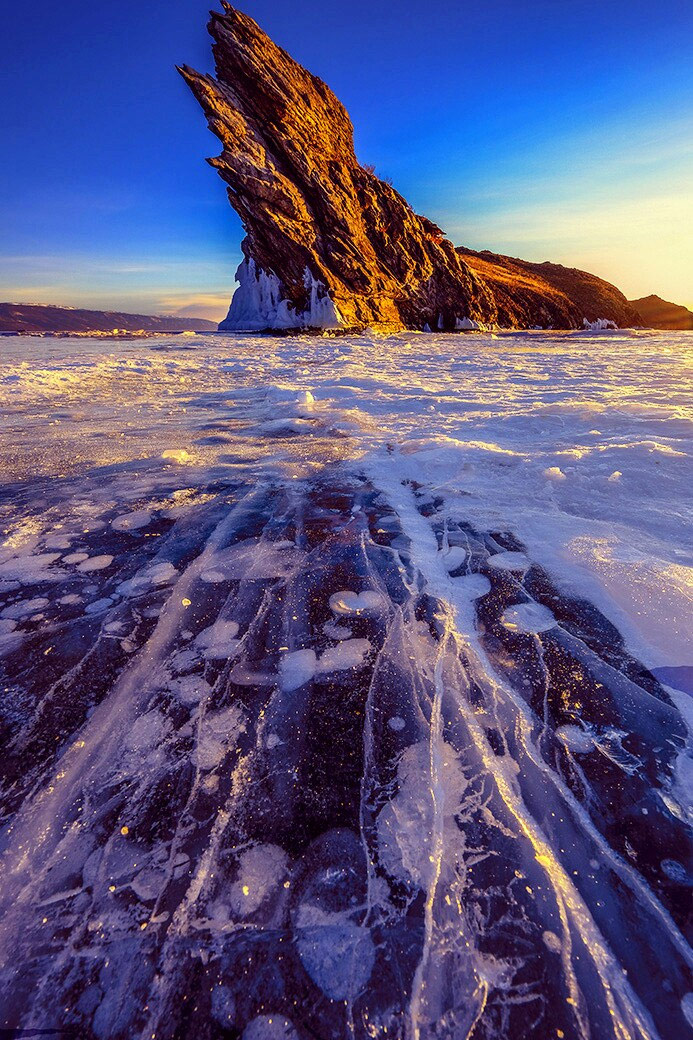
© Laily Hassan, Lahad Datu, Malaysia
Highly Honored Landscape
Lake Baikal is the oldest and deepest lake in the world. During winter especially in February and March, the lake’s surface is frozen solid and becomes the main sighseeing site in the Irkust region. The extraor-dinarily pure and transparent surface of the frozen lake makes it a landscape photographers paradise. For this photo, my friends and I encountered subzero temperatures. Since it was snowing the night before, most of the lake was covered by snow however we managed to find an area with transparent ice on the surface where bubbles of methane gas can be seen below the surface of the frozen lake. I positioned my camera at a low angle and pointed it up toward the rock, I managed to get a few shots as the sun rose above the lake casting its golden light upon the lake.
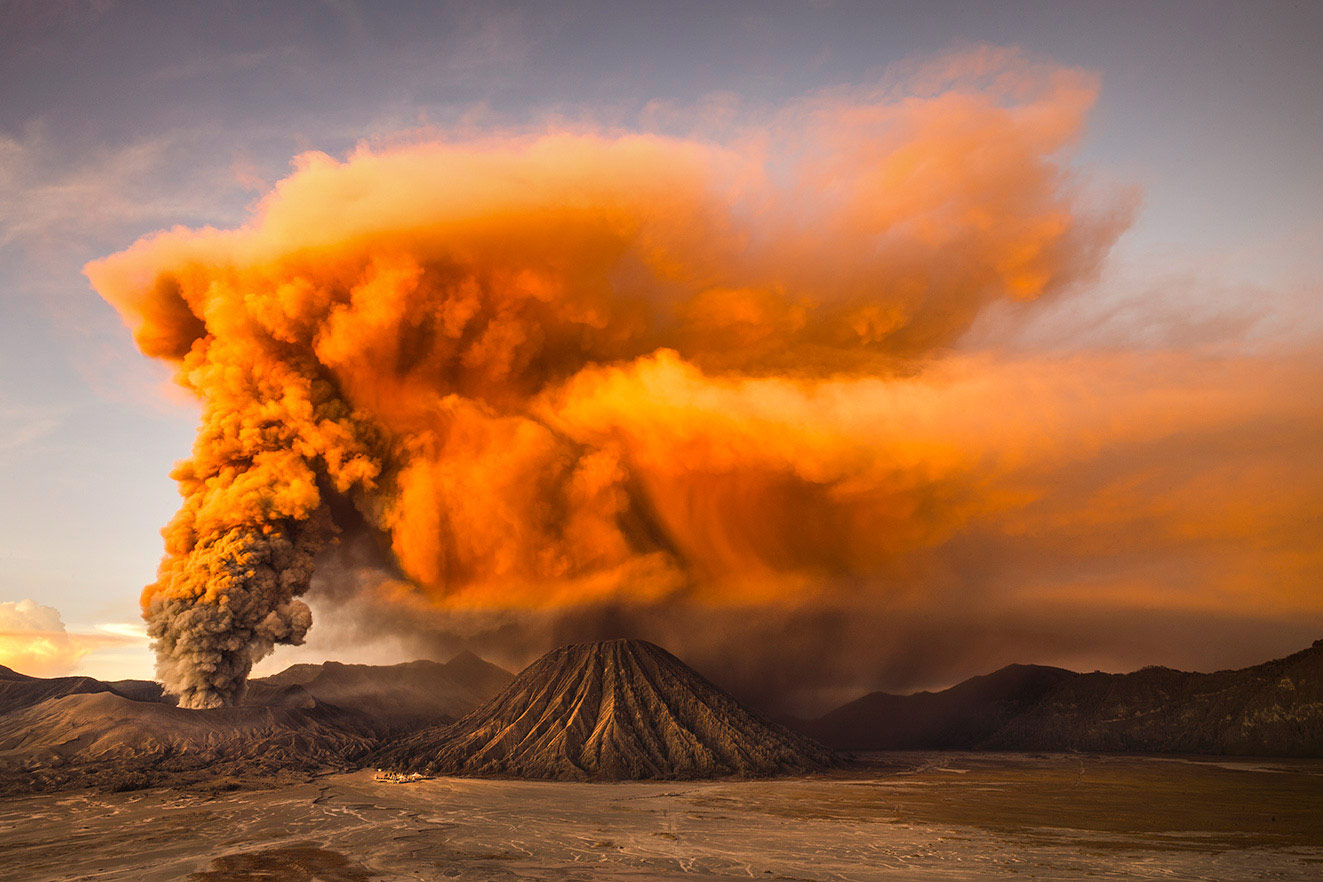
© Riksa Dewantara, Surabaya, Indonesia
Highly Honored Landscape
I happened to be in the area when the alert status was raised to the second highest level. During the sunrise, I saw the color of the smoke changing to be oranger than usual once the sun was shining on it. I immediately took a picture of it outside of a hotel balcony.
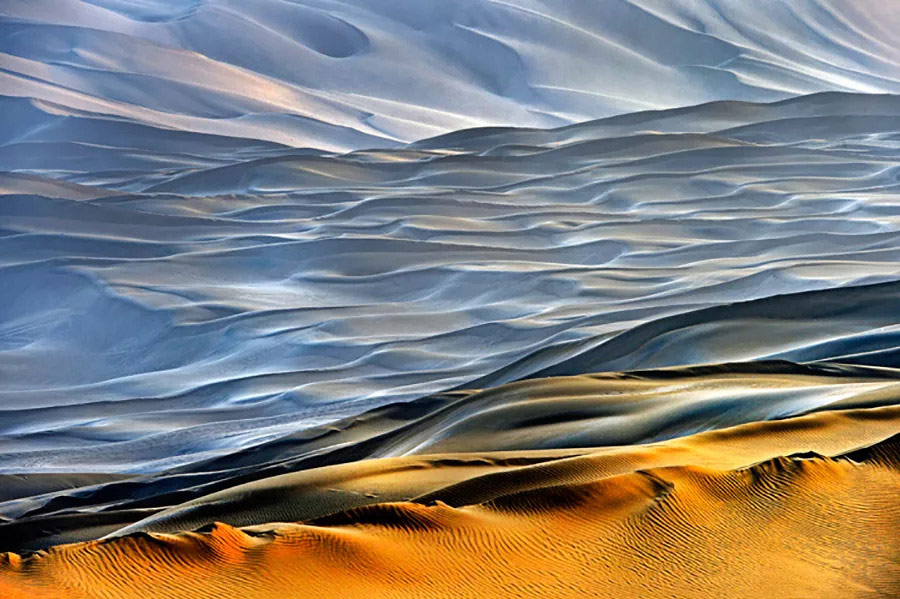
© Wong Kok Leong, Ipoh, Malaysia
Highly Honored Landscape
The Kumtag Desert is located in Xinjiang, China. We set off in the winter to shoot in the desert. The desert surface in the morning was covered with a thin layer of frost. The combination of smooth lines is very beautiful. The natural light shines on the desert and presents rich layers. This was a fantastic scene that I shot with a middle telephoto lens, of which I was very happy to have captured.
Ocean Category
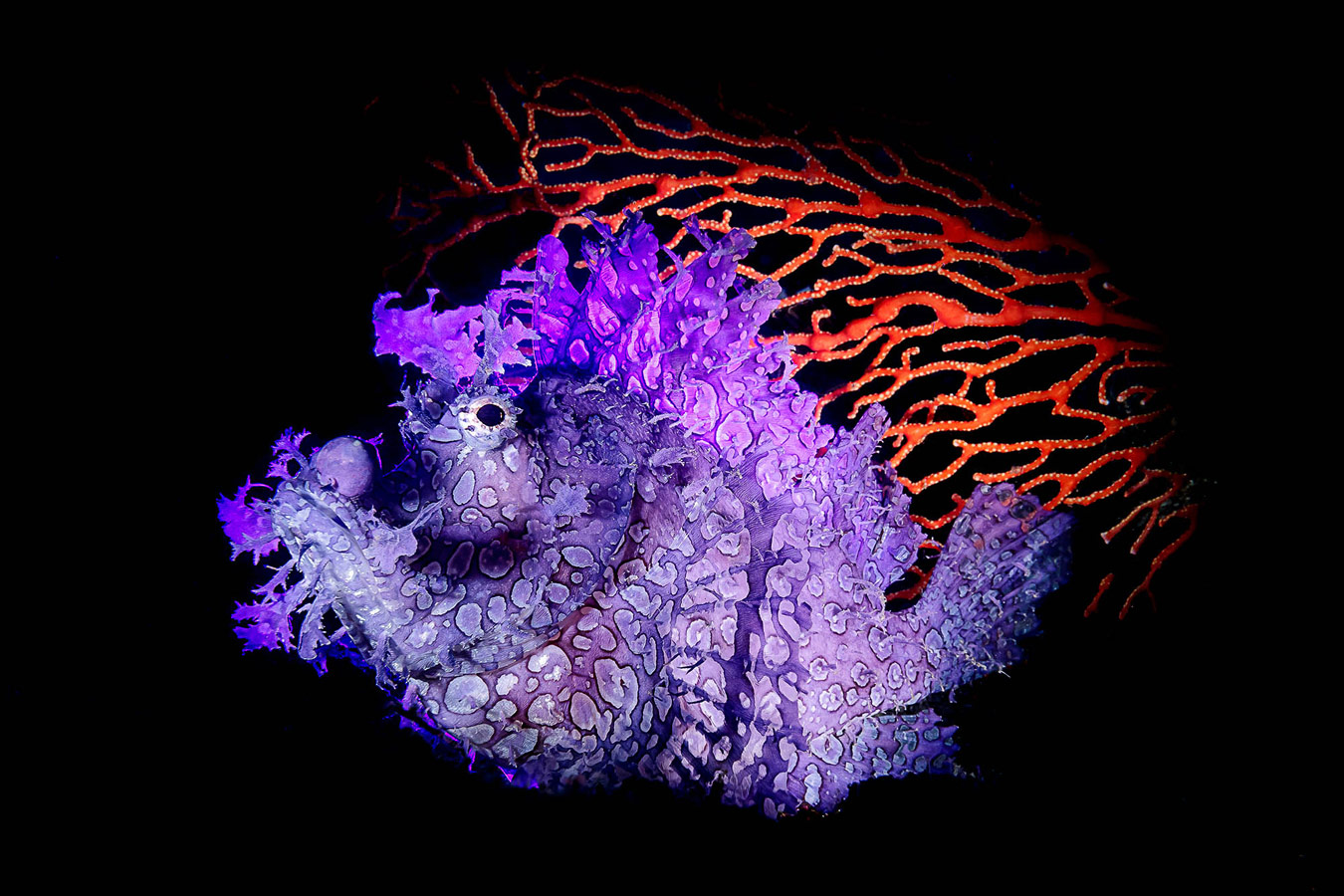
© Yung Sen Wu, Keelung, Taiwan
Winner Ocean
Rhinopias is a type of scorpionfish fish that doesn’t move often and stays in place waiting for food. It was hiding under a red sea fan and it looked like it was on fire. It was very beautiful and gorgeous. I used a snoot on the flash to shoot this photo.
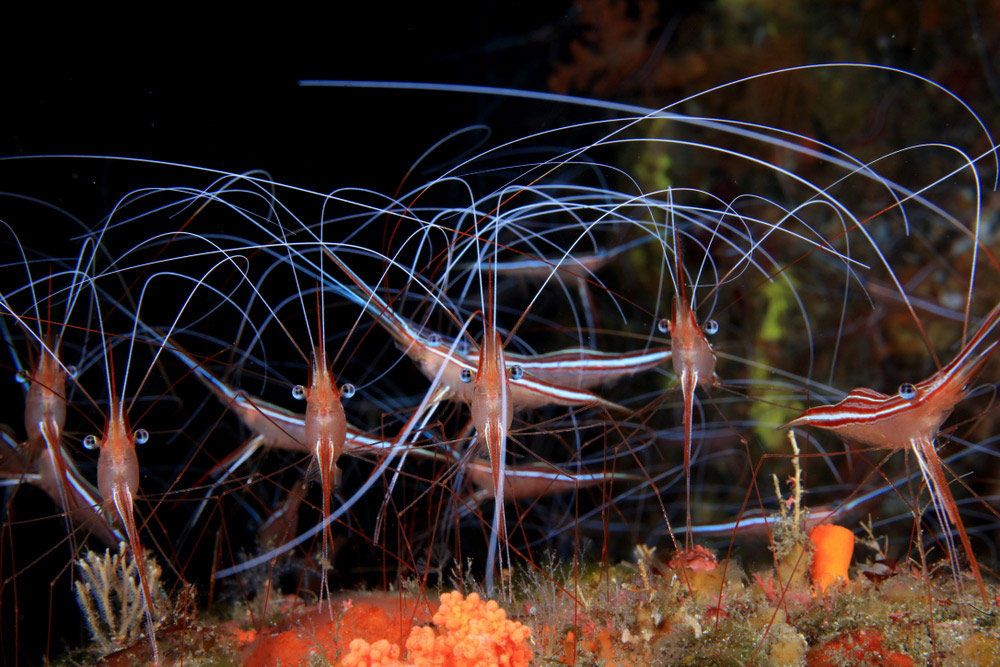
© Keigo Kawamura, Shizuoka, Japan
Highly Honored Ocean
I am a diving guide in Izu, Japan. Uni-corn shrimp are usually distributed at depths of between 200 and 300 meters but will lay their eggs at a depth of up to 40 meters. The number of shrimp varies from year to year, but it ranges from hundreds to tens of thousands. They do not like bright places so they usually hide in rock shadows, but in years where there are many of them they cover the ocean floor since there is a lack of rock shadows. I cropped this photo to show a beautiful alignment of shrimp.
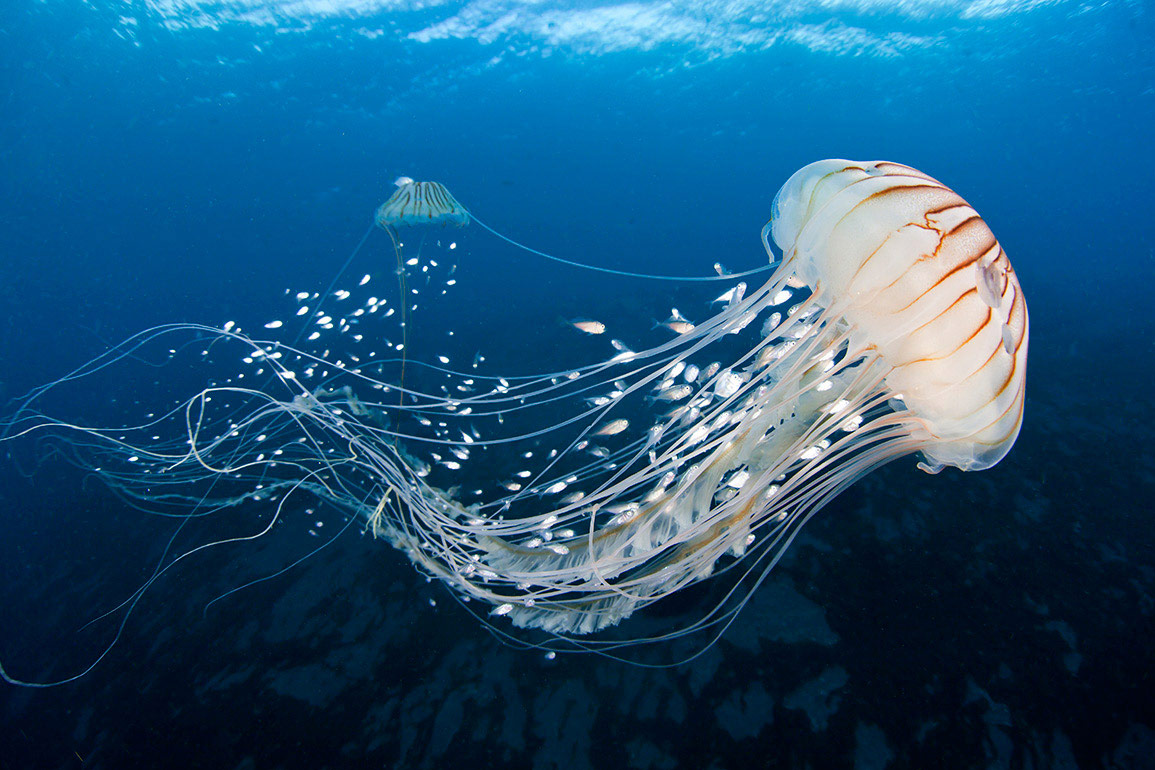
© Seishi Nakano, Kumamoto, Japan
Highly Honored Ocean
A chrysaora pacifica and small fish. In the early morning of a winter day, while wearing a dry suit and holding the camera as usual, I scuba dived leisurely in the sea. I usually dive with a macro lens attached. The ocean had been very beautiful for the past few days and deep-sea fish and deep-sea creatures appeared due to up-welling so I expected to see something so I went in to the ocean with a wide angle lens. On this day I was able to see many unique creatures that I can not usually see but the encounter with this jellyfish was especially interesting. A lot of small fish were around the jellyfish and I took many photos of it. I was excited to cross paths with another chrysaora pacifica.
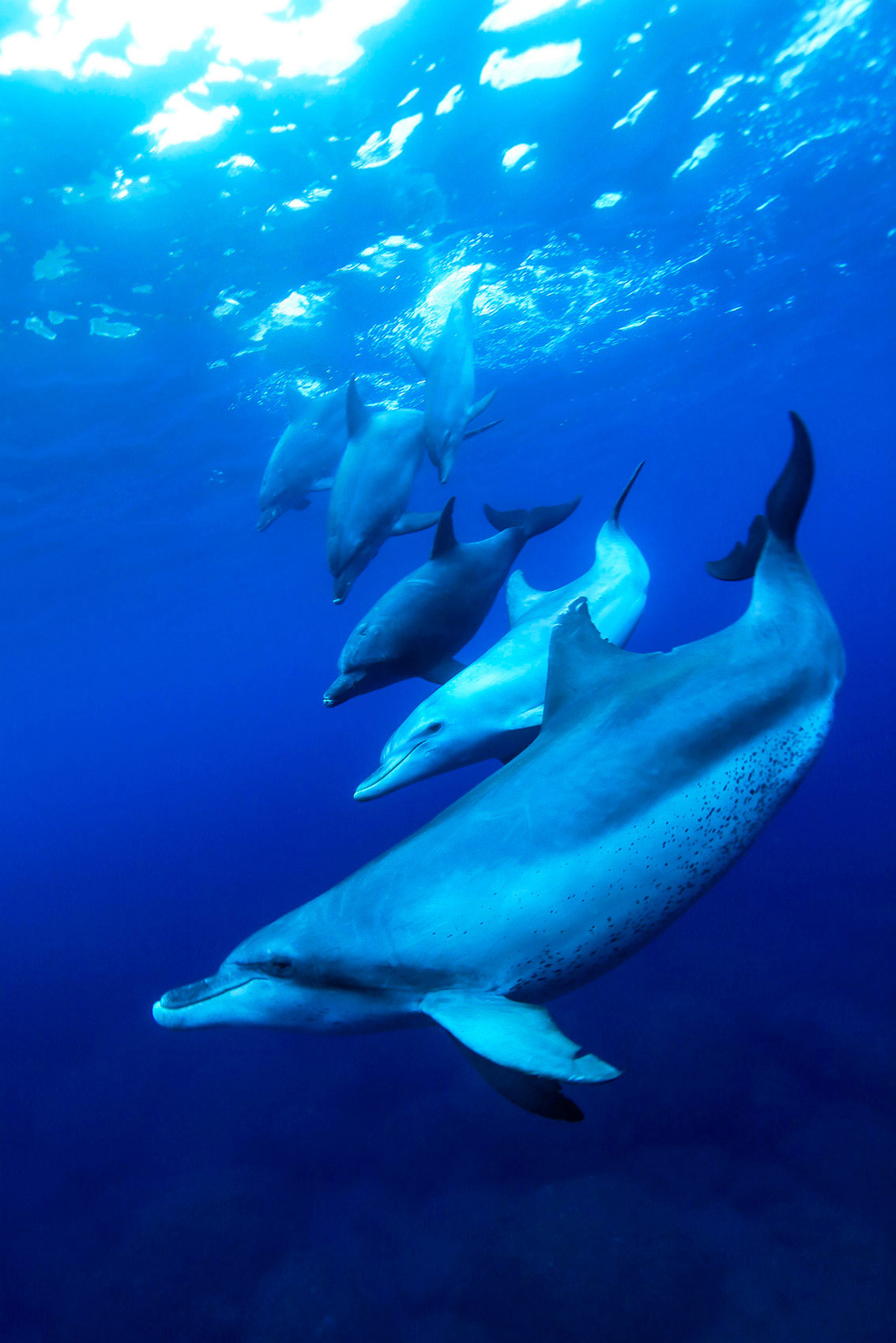
© Mana Nomoto, Ogasawara, Japan
Highly Honored Ocean
It has been 26 years since I first swam with dolphins in the beautiful sea of Bonin Blue. Bonin Blue is a special word used to describe the color of the ocean around Ogasawara. I still swim with dolphins whenever I have the chance. I never get tired of it and I could continue swimming with dolphins for another five or ten years capturing them with my camera. One day in the spring when I was on one of my daily dives I met a pod of baby dolphins. My eyes met with the sweet eyes of a baby dolphin whose body was still white. It was as if its lovely eyes were inviting me into the sea.
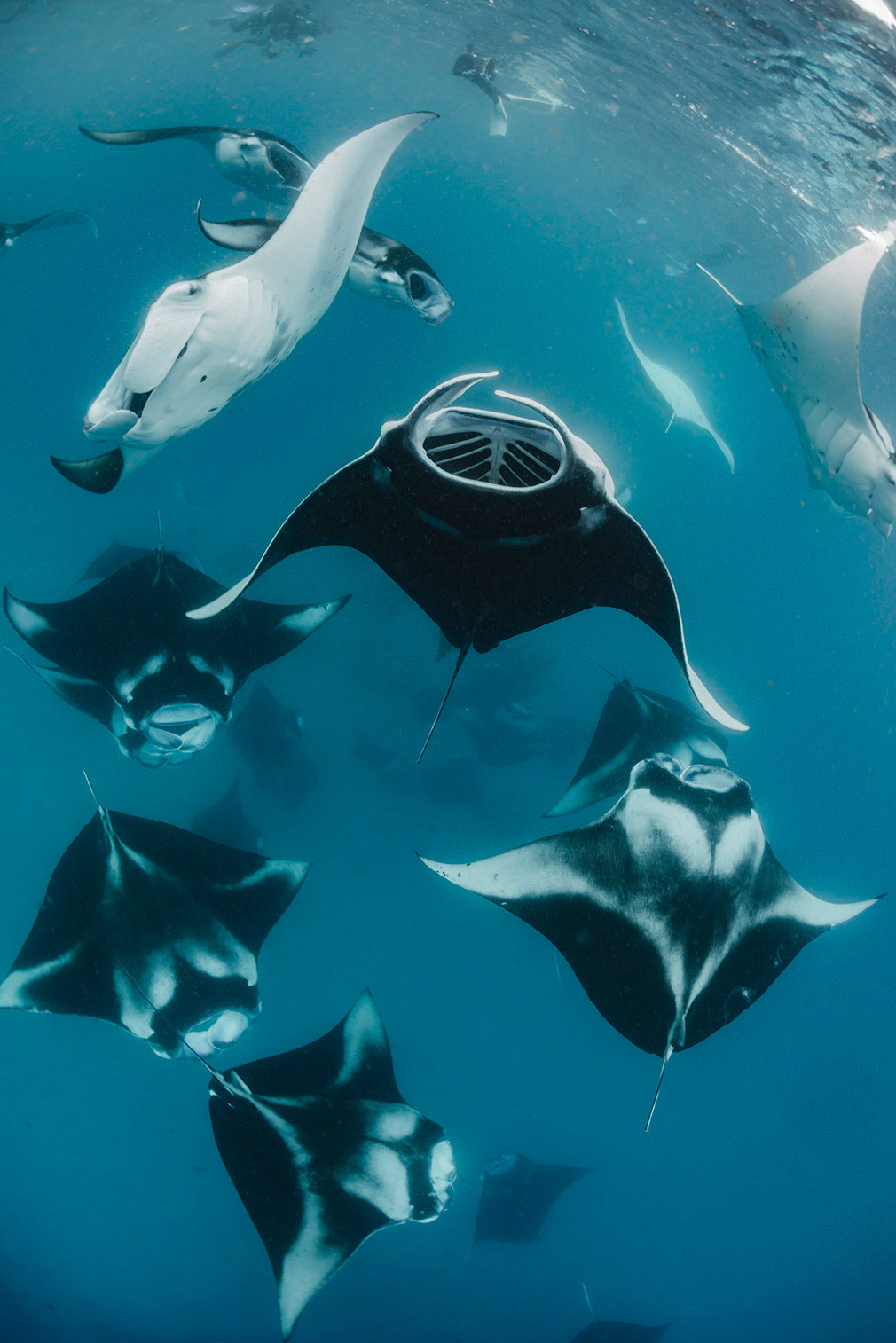
© Daisuke Kurashima, Kanagawa, Japan
Highly Honored Ocean
Baa Atoll in the Mal-dives is a famous place for the hordes of mantas that visit to feed on plankton.On this day I encountered a group of mantas much larger than I had expected. From the way they were swim-ming, it seems that they were not at all worried about the presence of humans. A group of mantas were spiraling up-ward and I was able to capture the mo-ment the leader of the group reached the surface flipped his body over and dove back down. This photo truly expresses the mantas’ suppleness and strength.
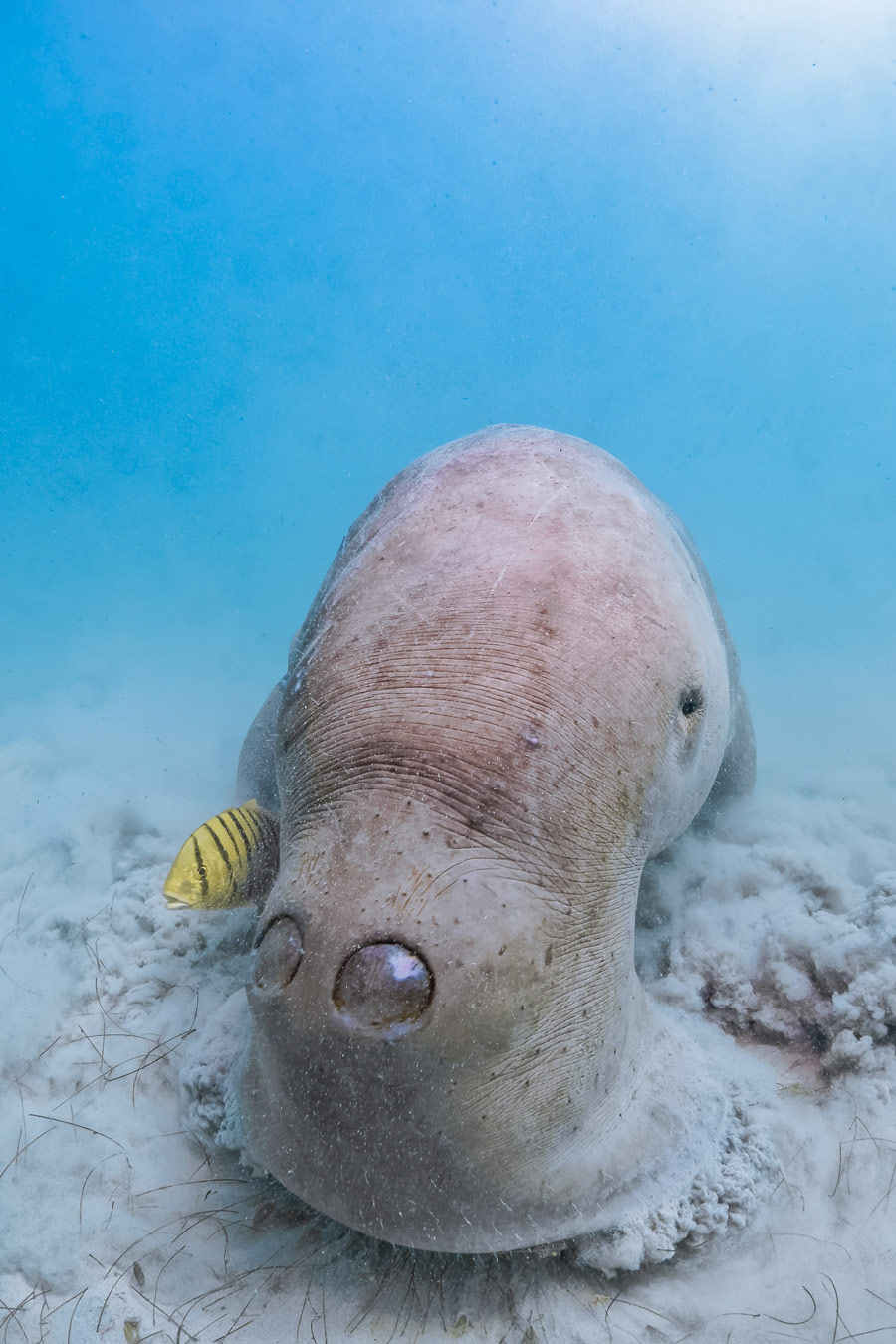
© Jim Chen, Taoyuan, Taiwan
Highly Honored Ocean
Dugongs eat algae at the bottom of the sea. Dugongs have nostrils on their snouts. These nostrils have special valves that are closed under the water surface and open when they return to the water surface to breath. Dugongs may remain under water for around 6 minutes.
Small World Category
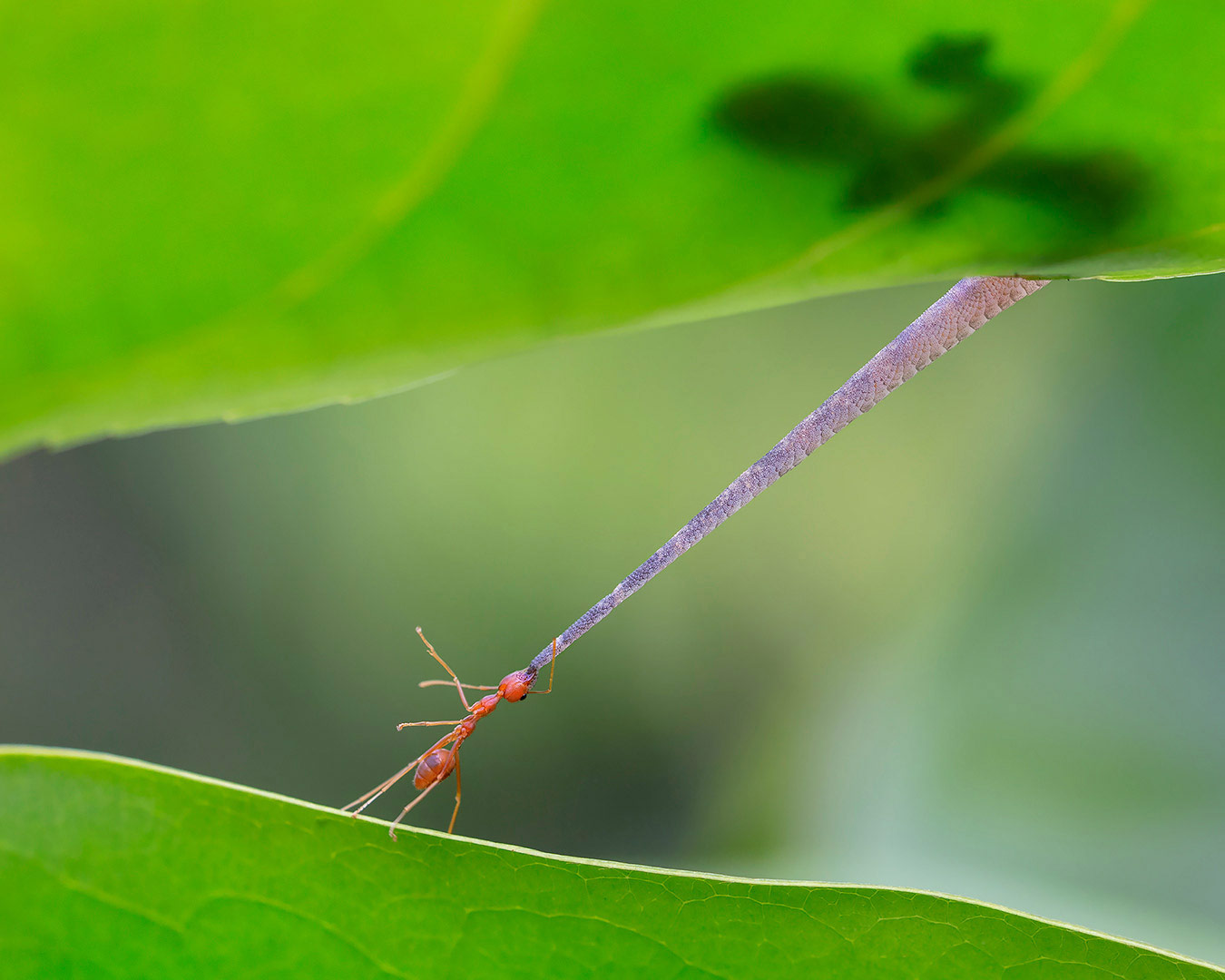
© Wei Fu, Markham, Canada
Winner Small World
This type of red ant is a common insect in Thailand and very tough on any prey no matter how big it is. When I was searching for insects to shoot in the grass and bushes, I found this little gecko’s tail being bitten and held tightly by the red ant. The ant was trying to pull the gecko off from the leaf, I quickly focused on it and clicked the shutter to catch this moment, after struggling desperately for a few seconds the gecko was able get rid of the ant and run away.
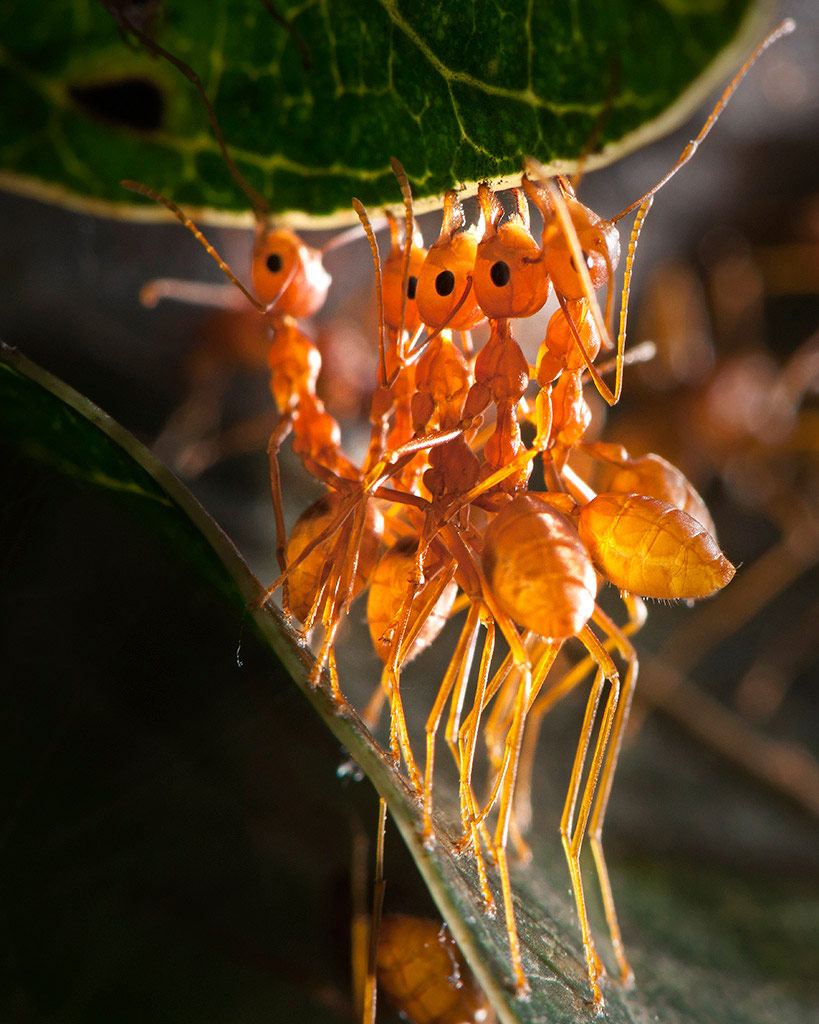
© Satpal Singh, Mohammadi, India
Highly Honored Small World
Weaver Ants (Oecophylla smaragdina) are known for their hard work and cooperation. These ants exhibit marvelous architecture and intelligence to build their nest with leaves. When a new nest is required, individual workers scout for suitable clusters of leaves, which they grab with their mandibles and attempt to draw together. When a number of leaves are stretched into position for binding, each held in place by rows of workers joined by another set of workers as is depicted in the picture. As soon as all the leaves are brought together the process of stitching these leaves starts. The mature and experienced workers capture white colored and transparent late instar larvae with quite delicacy in their mandibles and move them to and fro on the edges of the young tender leaves. In response to this movement or tingling feeling, the larvae release sticky material from their glands and a white sheet of silk joins the leaves one by one. This behavioral characteristic of ‘stitching or weaving leaves’ for nest formation is unique among these ants, and the reason behind their name ‘Weaver Ants’.
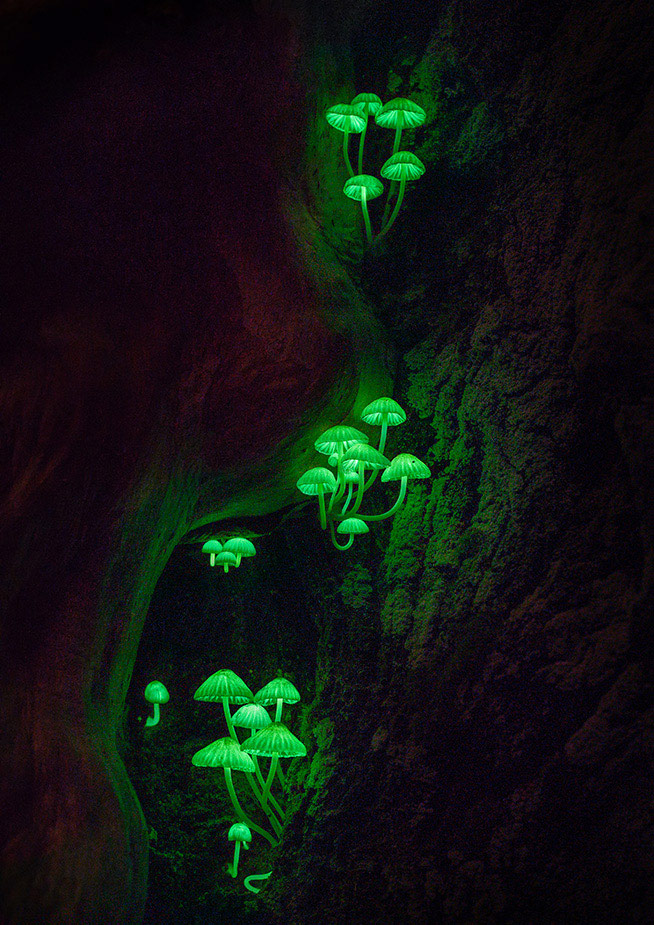
© Nori Yuasa, Hyogo, Japan
Highly Honored Small World
This is a group of Shi-nano Tomoshibi mushrooms; Scientific name: Mycena lux-coeli. These glowing mushroom can only be seen in several places in Japan and in the entire world. They only grow for a short time around the end of June. Since I wanted to show this bunch of mushrooms like family living in the hollow of a tree I shot this photo in the middle of the night just using the light of the mushrooms. It was raining a little. This group of mushrooms were shining for only a few days and withered the next day. My history of photograph is long and I have taken many photographs of the starry sky. About 8 years ago I started taking pictures of natural glowing things such as fireflies and sea fireflies at night.
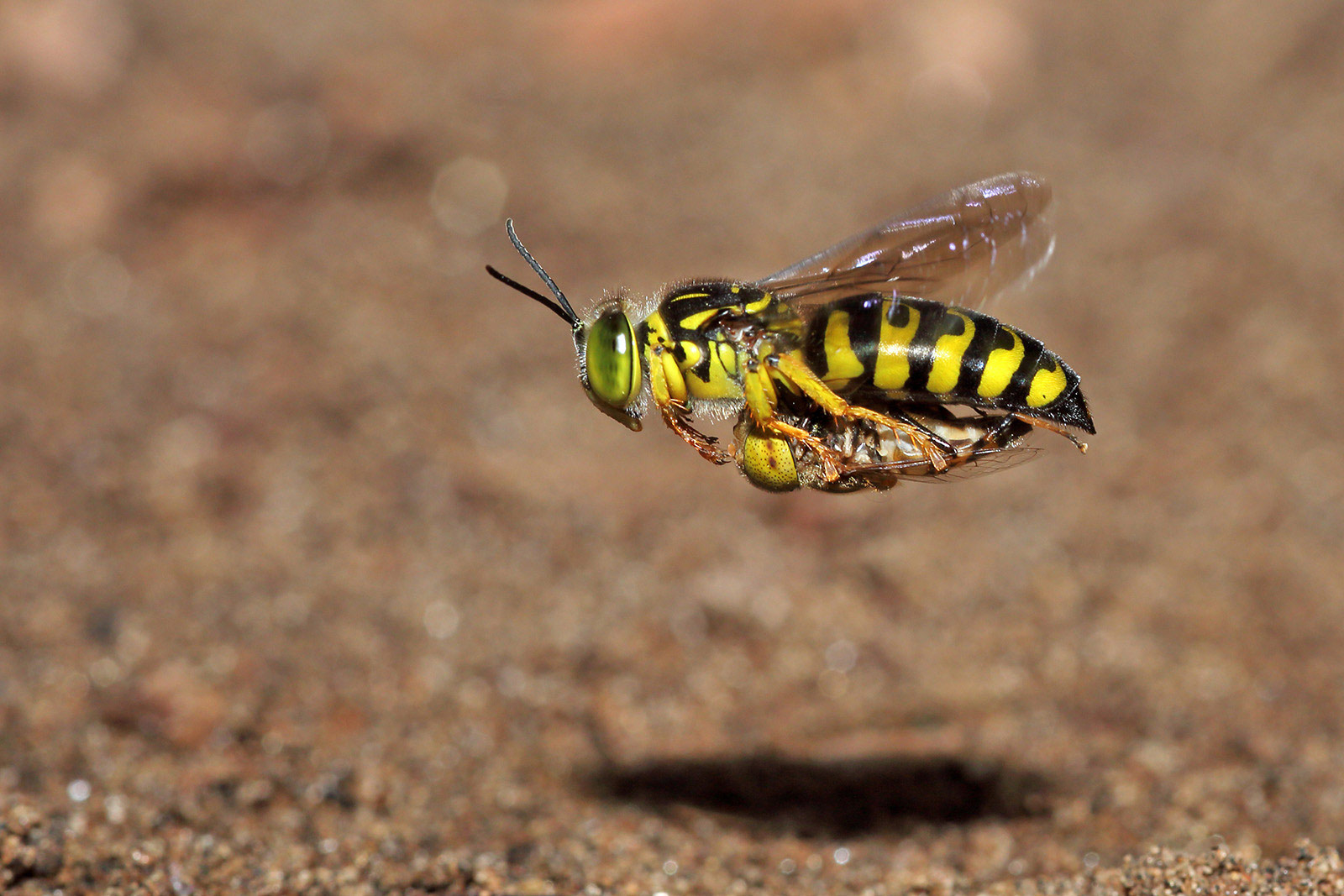
© Karthikeyan Shanmugasundaram, Coimbatore, India
Highly Honored Small World
During a wet morning while I was scouting for some shots of sand wasps, I captured this incredible moment where a sand wasp was carry-ing a paralyzed hover fly to safe guard the food by burying it for it’s to be born little ones. It was very difficult to cap-ture this moment particularly in flight because they fly very fast while entering into its nest and after many missed mo-ment’s finally I captured the shot I was aiming for.
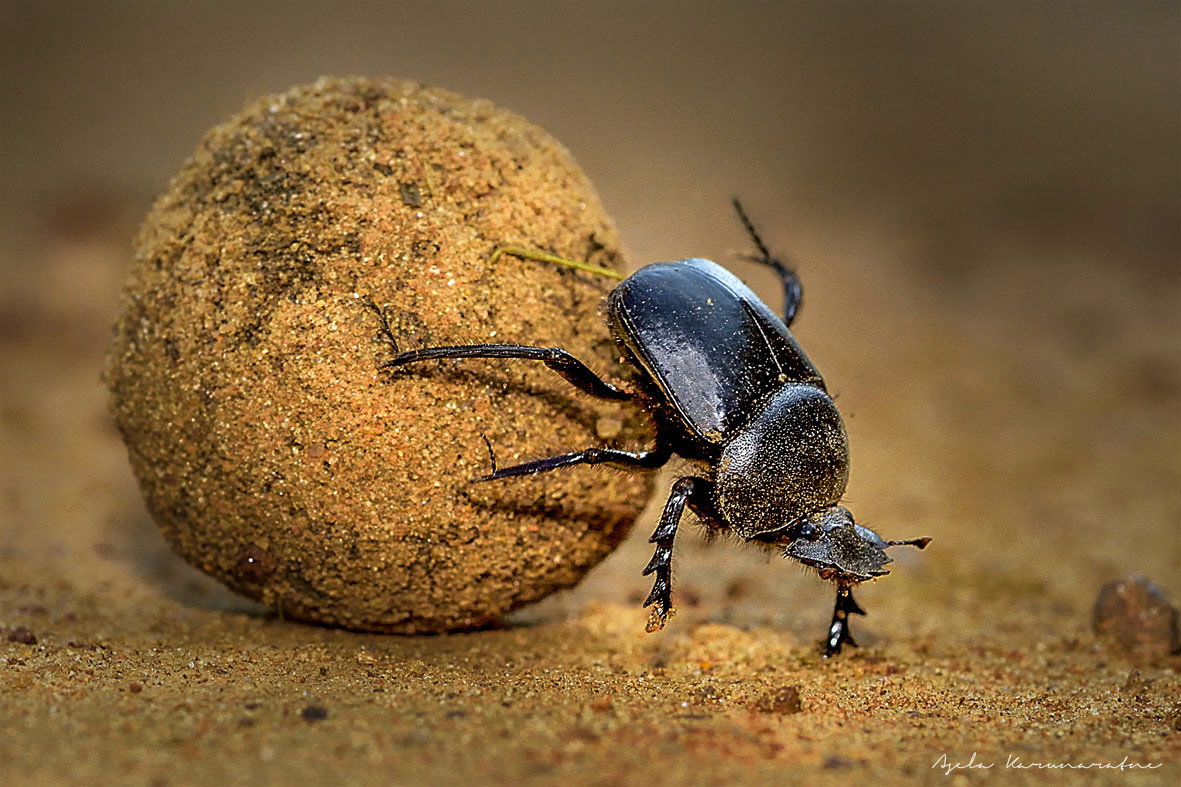
© Asela Karunaratne, Kurunegala, Sri Lanka
Highly Honored Small World
Though I have photo-graphed Dung beetles before, they were shots taken while I was standing above the beetle and they were not creative. Since realizing the value of taking a shot of a little beetle while rolling its dung ball, I have been looking for them whenever I visit places where they can be found. But I had to wait more than five years to see this type of action again. This time it was in Yala National Park. This time I thought it’s time for me to take a low angle shot of it. The beetle was on a dung mountain which was on grass, I took a few shots while lying down on the ground, then he dragged the ball on to the grass, but that was not the shot I was looking for. So while I was waiting on the ground the beetle dragged its dung ball on to a gravel surface.
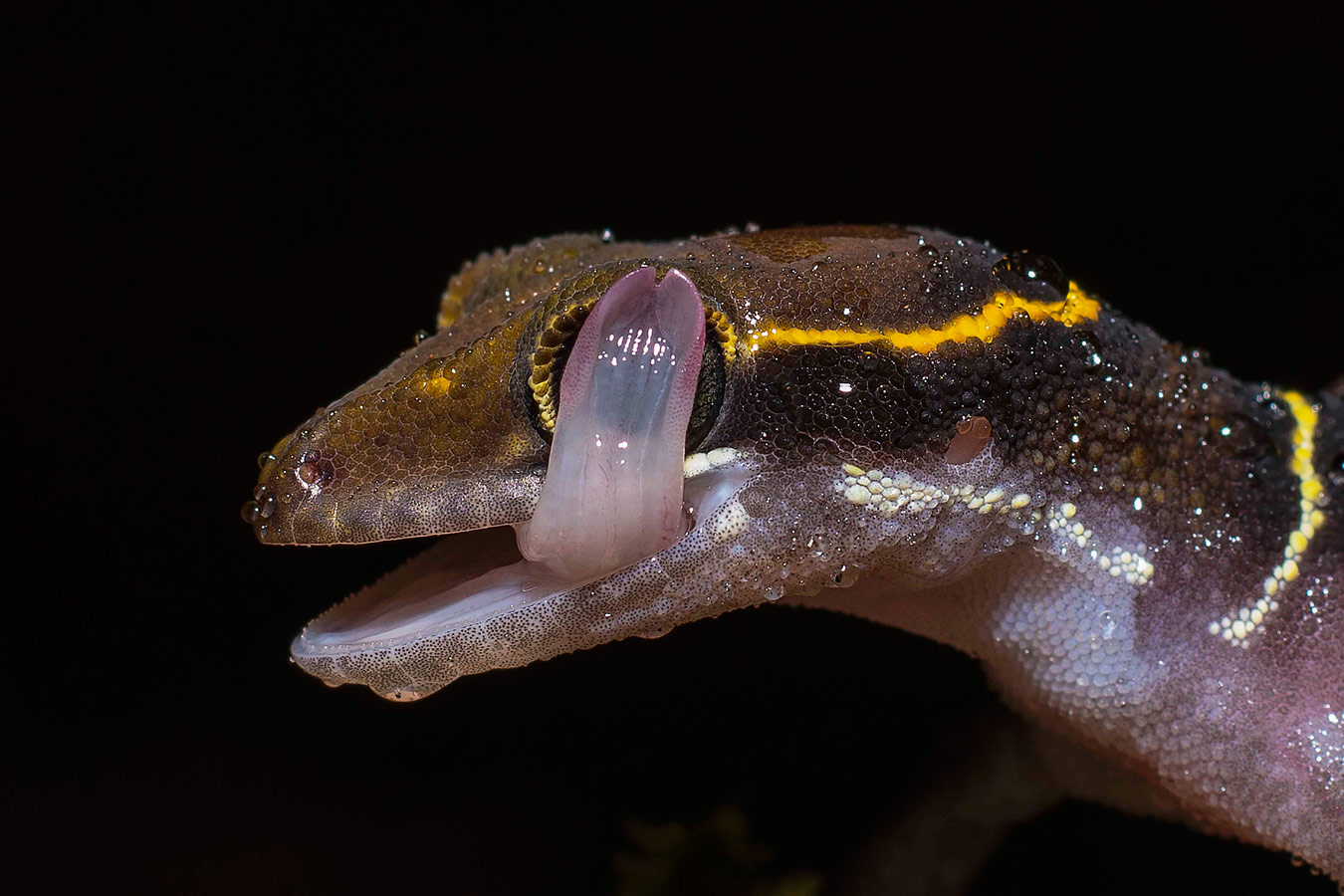
© Ankur Moitra, Mumbai, India
Highly Honored Small World
It was late night by the time the rain had stopped, I went to the field and there I found this gecko sitting on top of a rock. After a few clicks I finally got a decent shot. Most Geckos can’t blink as they don’t have eyelids. Like snakes, their eyeballs are covered with spectacles and transparent scales that protect the eyes. To keep them clean, many species use their tongues like windshield wipers. They also drink water in a similar way. I clicked this image with the help of 50mm f/1.8 along with attaching a Voking 12mm extension tube.
Birds Category
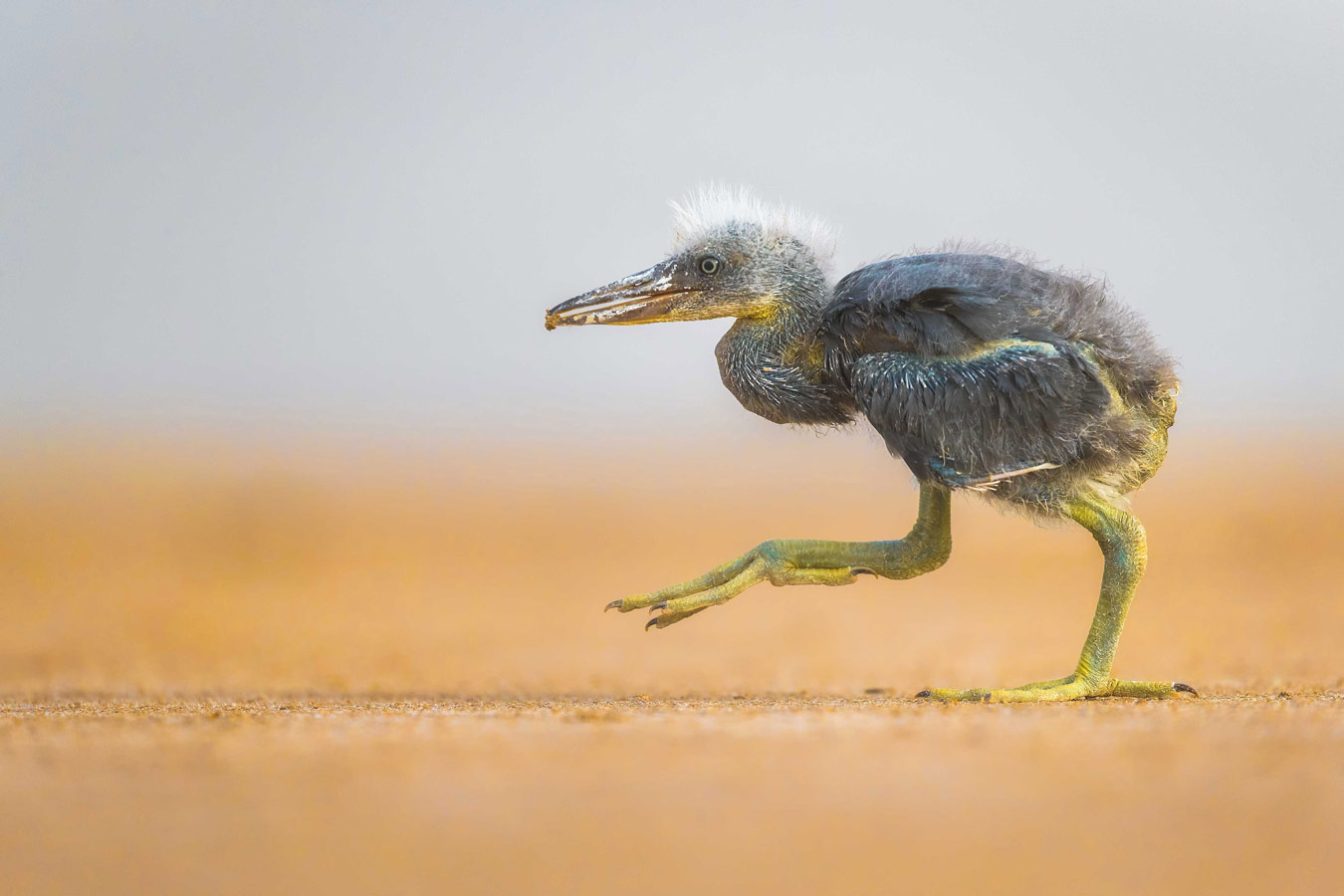
© Faisal Al-Nomas, Kuwait City, Kuwait
Winner Birds
A baby grey heron is slowly trying to reach his nest after becoming separated from it and starting to feel unsafe. This photo of the baby heron was taken on Bubiyan Island, the largest island in the Kuwaiti coastal island chain situated in the north-western corner of the Arabian Gulf. It is a safe place for both animals and people alike. To reach the island you need to have government permission and has been an environmentally protected area for more than 27 years. When I got to the island I found some nests then lay down and moved around slowly while wearing my camouflage clothing.
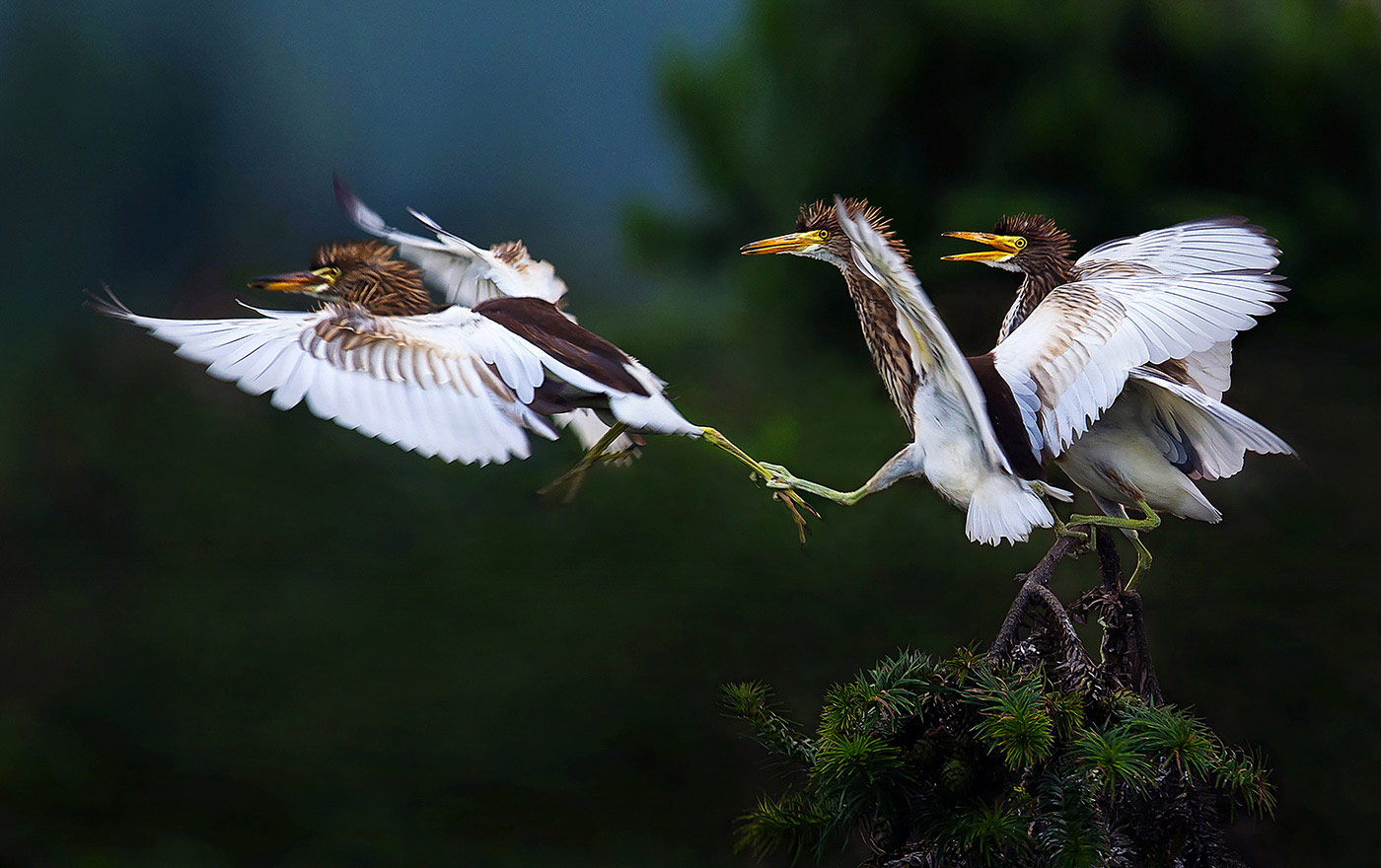
© Jianhui Liao, Nanchang, China
Highly Honored Birds
A pond heron flies away and is pulled back by his companion.
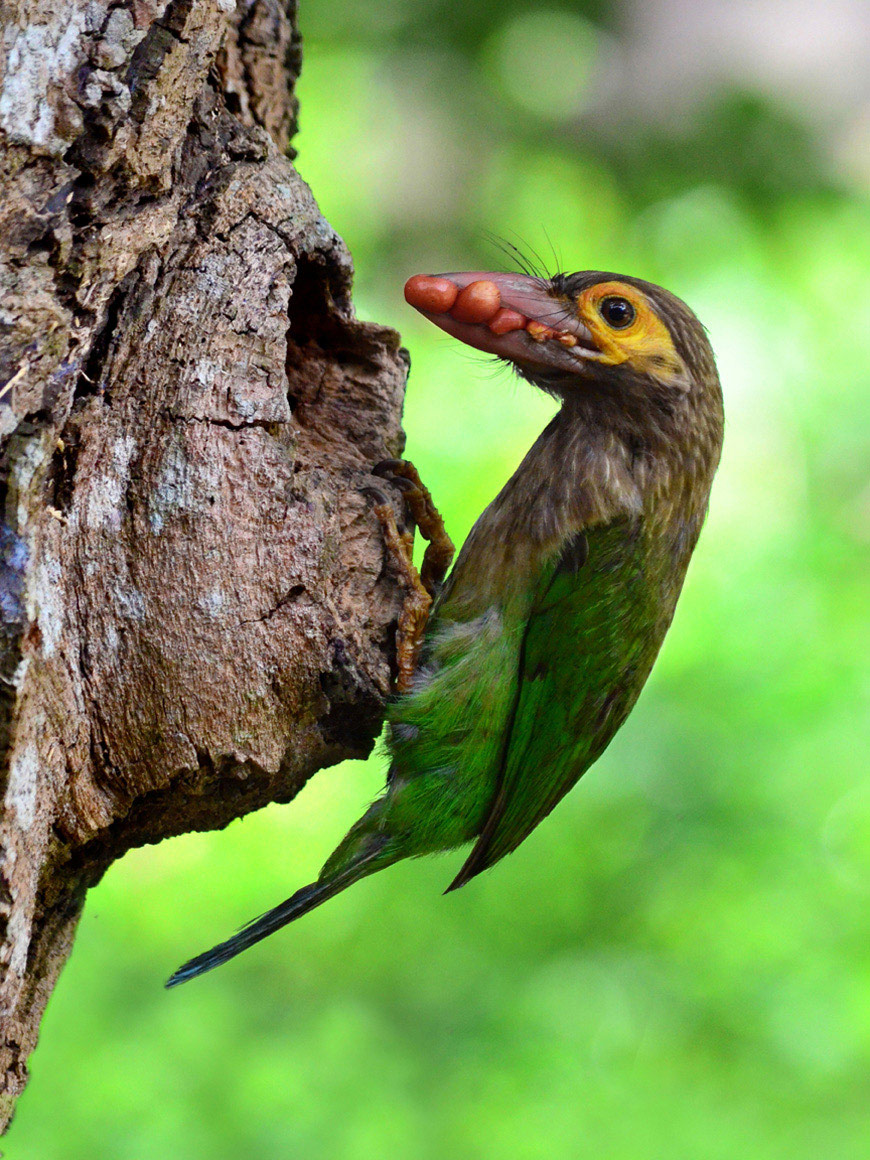
© Sunil Warnakulasuriya, Moratuwa, Sri Lanka
Highly Honored Birds
The subject in this photograph is a brown-headed barbet. It is resident in Sri Lanka, Bangladesh and India. Its habitat is gardens and avoids thick forests. These birds feed on fruit and occasionally on small insects. They build nests in tree holes by pecking and digging out the tree trunk. A pair will repeatedly communicate with each other in a call that sounds like repeating ‘kutroo’. In this photograph a parent bird is seen about to enter the hole with a beak full of banyan fruit. In this case the nest was built about three meters above the ground. I set up an alumi-num ladder and tied the camera to it yet I could not get close enough without scaring off the bird. The shutter was released from a distance using a remote shutter release. I waited nearly six hours to capture this shot. Weather conditions were fine, though it was bright the sky was cloudy making the light softer. I am an amateur photographer. I have experi-ence in covering family events and social events of friends and relatives. After retirement I became interested in nature photography especially birds and insects.

© Mohammad Murad, Kuwait
Highly Honored Birds
I took a picture of this pharaoh eagle owl chick in the northern Kuwaiti desert, 160 km away from Kuwait City. He was hiding between these yellow small bushes while one of his parents was giving an alarm call since I was kind of close to the chick. I parked the car far away and walked slowly to a spot where I lie down and put a net over me and waited for the parent to catch something and feed the chick. I stayed there for almost three hours and I was sweating all over because of the high temperature – it was about 49 degrees – so I waited and nothing happened then a breeze of air started to hit the yellow grass. Then the chick stood up and started looking around. Because I was on the ground at eye level, this blur effect came out perfect.
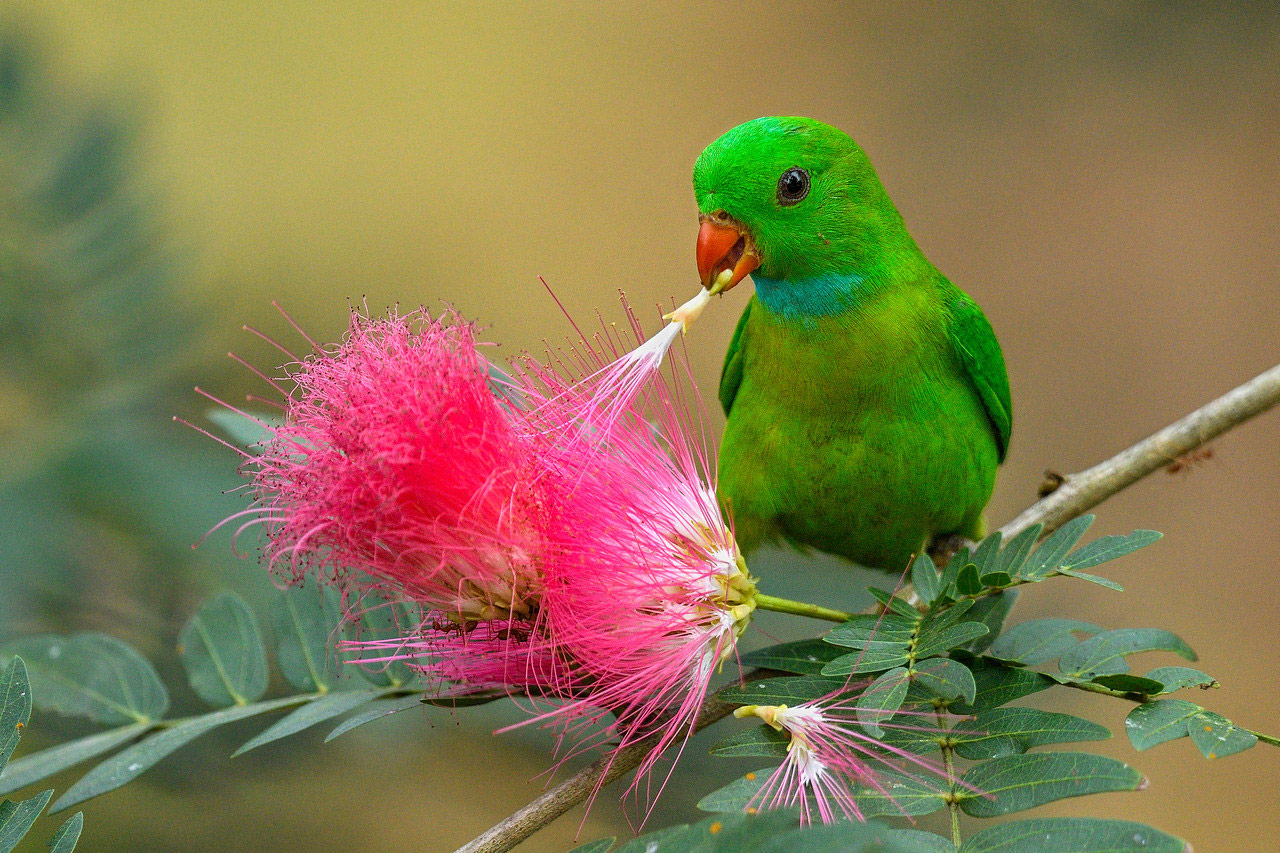
© Santhosh Krishnamoorthy, Bengaluru, India
Highly Honored Birds
This beautiful little bird is a vernal hanging parrot, it is the only parrot in India, all of the other birds in the parrot family are parakeets. It was January, mid winter in Goa. Not that cold in this part of the world. Good season for birding and bird photography though. On one of my visits to this area, I kept observing that these parrots regularly visit the plant of powder-puff flowers, in the morning and afternoon, almost everyday. These birds seem to love powder-puff flowers. So, one afternoon, I found a spot to sit and wait for them to arrive. Didn’t have my tripod with me unfortunately. So, I had to make do hand-holding the big and heavy 500 f/4 lens. After a long wait, they finally showed up. Landing on the plant, they started feeding on the lovely pink flowers giving some opportunities to make a few images. I had to juggle around with the ISO combinations to get a decent enough shutter-speed to hand hold. All the effort and the wait was absolutely worth it.
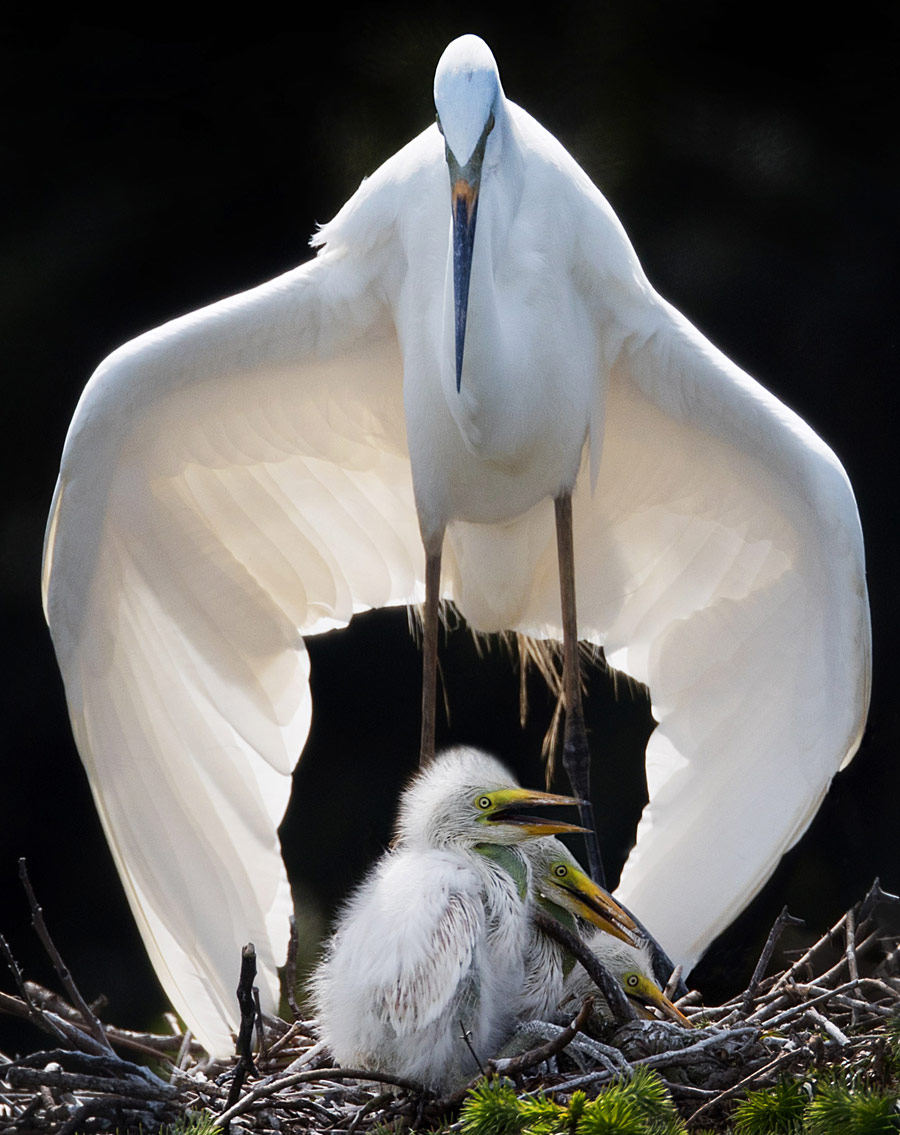
© Guiyang Zeng, Nanchang, Jiangxi, China
Highly Honored Birds
The mother egret guarded her three children and spread her wings to protect them.
Junior Category
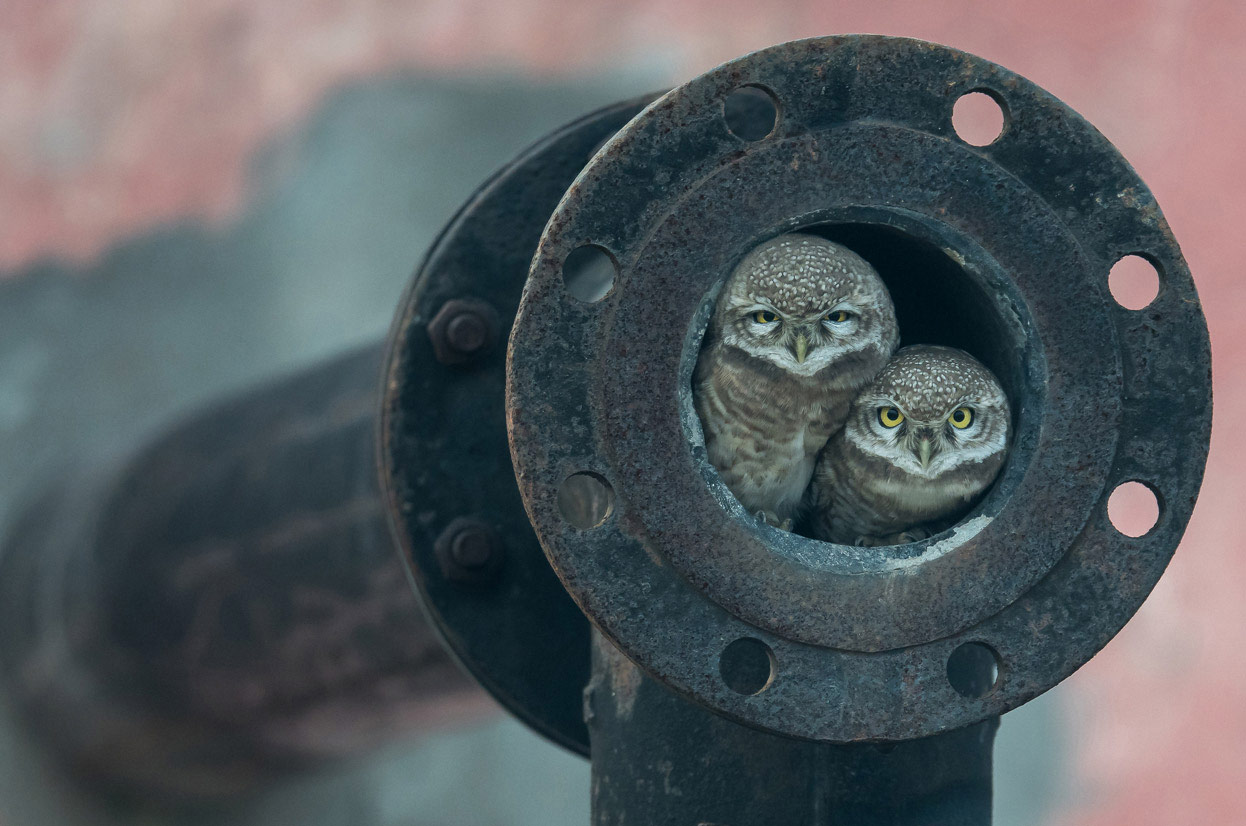
© Arshdeep Singh, Jalandhar, India
Winner Junior
I often travel to Kapurthala town with my father for birding. In winter on a Sunday morning I also went with my father once again for bird photography. On the way while we were crossing the road I saw a spot-ted owlet flying and he went inside this tube. I asked my dad to stop the car, he stopped the car but didn’t believe me that the owl could go inside this tube. I looked at the tube again for few minutes and I was surprised to see a pair of owlets coming out of the tube. I pointed my dad towards the tube and he was stunned seeing the owls over there. He rolled the car glass down for me and without wasting anytime I got the shot of the owlet duo. They were looking straight into my eyes, I felt like each of the owlets wanted to say “I C U” boy! I was happy to see these beautiful spotted owlets in their urban home and I had to say goodbye to them so that they could be on their own.
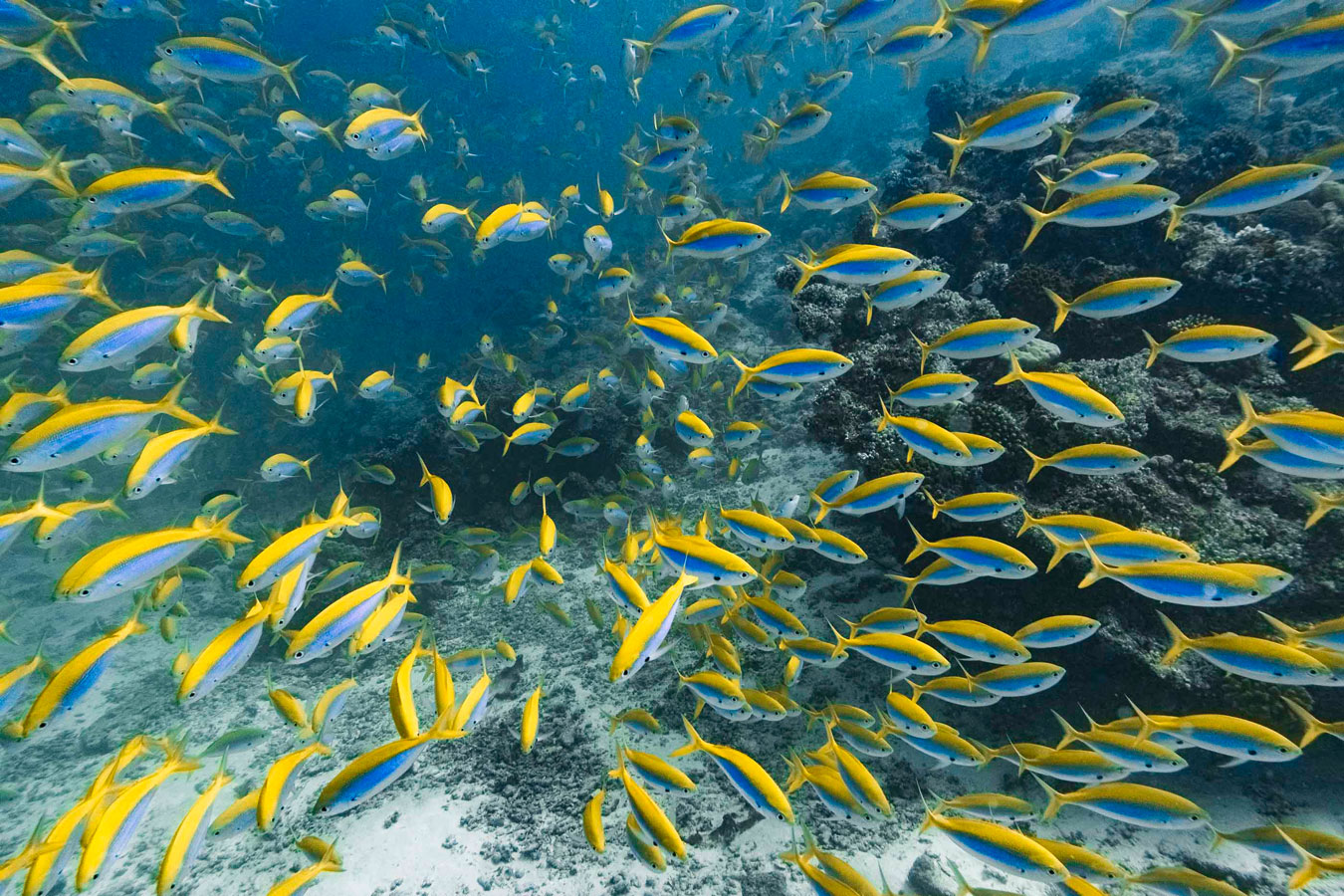
© Ankit Kumar, Singapore
Highly Honored Junior
A school of yellow fusilier fish swam around the camera, encompassing me in a living wave. I had just started taking underwater photos, and I was looking for scenes that cap-ture the essence of diving for me, when I noticed this school of fish swimming with the current a bit further down the reef from me. I positioned myself in their path, and waited for the current to bring them closer. I was hoping that they would swim around me and create a tunnel effect so I could take a photo. When they approached, I angled myself so that I would take up less space and aimed my camera directly into the school. I was absolutely ecstatic when the wave broke into a tunnel, and swam around me. This photo was taken in the Malé atoll in the Maldives, which is one of the countries that is most threatened by rising sea levels (as a result of global warming).
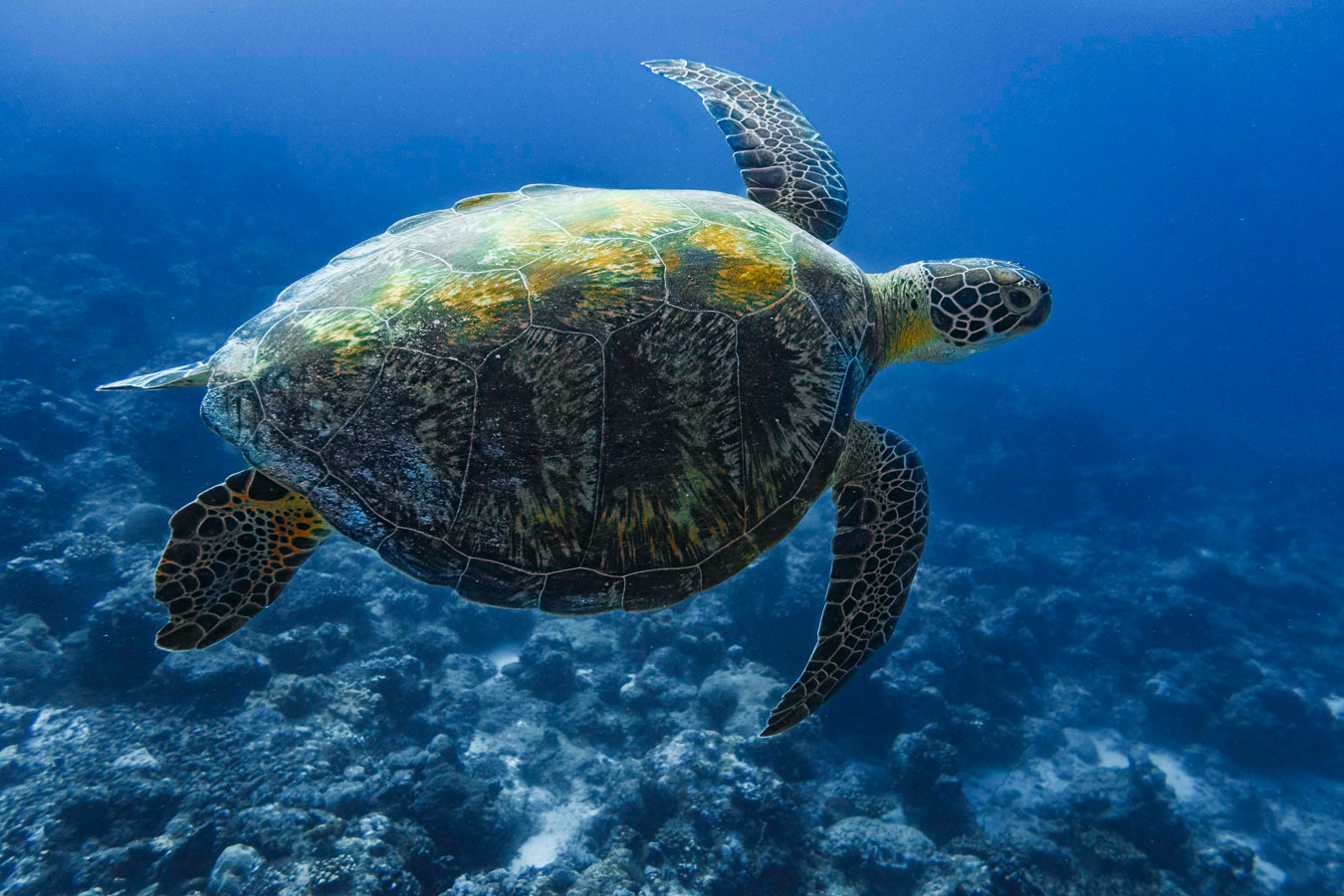
© Ankit Kumar, Singapore
Highly Honored Junior
A green turtle swims by the camera, showing off the unique pattern on the side of his face and shell. I had just started using my underwater camera, when I began my PADI Sea Turtle Identification specialization course. The course is geared towards the protection and conservation of sea turtles by taking photos of the side of a sea turtle’s face. This pattern is unique to an individual, similar to how each person’s thumbprint is unique to them. By keeping track of all of the turtles in the reef, it is possible to know what turtles are unhealthy or at risk so they can take measures to protect them. During the dive, we were supposed to swim close enough to a turtle to capture the pattern on their face, and record it for later. This photo shows the turtle’s face clearly and the health of the turtle can be assessed from the body. This photo was taken in Malé atoll in the Maldives.
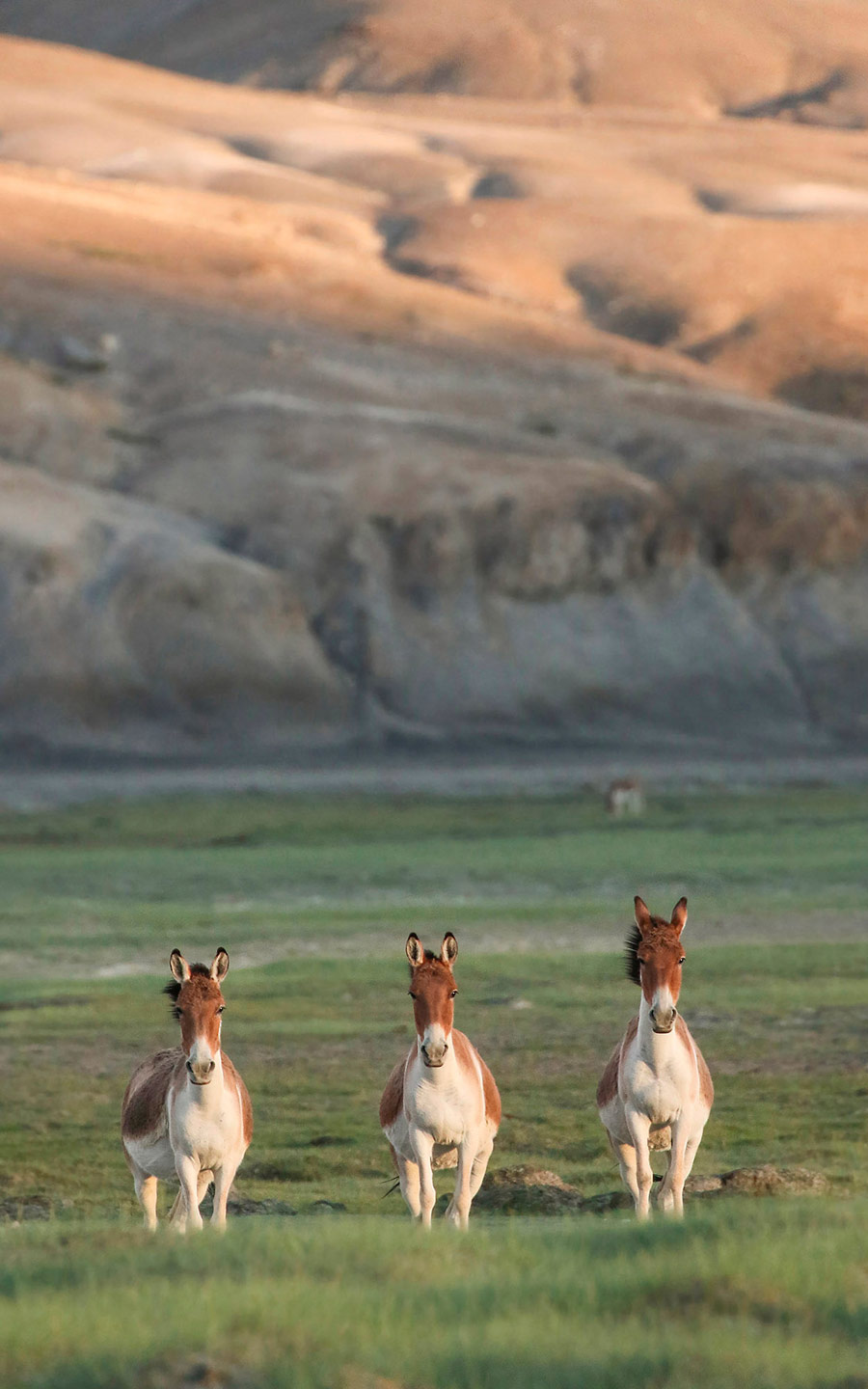
© Dheeraj Nanda, Bangalore, India
Highly Honored Junior
While driving around a small village called Hanle in Ladakh, Jammu and Kashmir, I could see a group of Tibetan wild asses grazing. Three of them were away from the group and were trying to catch-up with the main group and in the background was the mighty Himalayan mountains. To my luck, these three were standing according to their ascending height order and for a second all three together looked straight into my camera.

© Kaito Takahashi, Gunma, Japan
Highly Honored Junior
I was waiting to see an eagle on the summit of the mountain for 5 days. Sometimes it would appear but it would soon disappear. Then there was this deer that appeared on the rocks where the eagle often lands. Small deer are sometimes caught by eagles but this deer has a splendid set of antlers and appeared in a spot where it had no fear of being attacked. The angle of the backlit deer made for a very impressive scene. The deer moved before I could change the settings on my camera, so it came out a bit brighter than what I had intended, but I manipulated the image to match the way I remember seeing it.
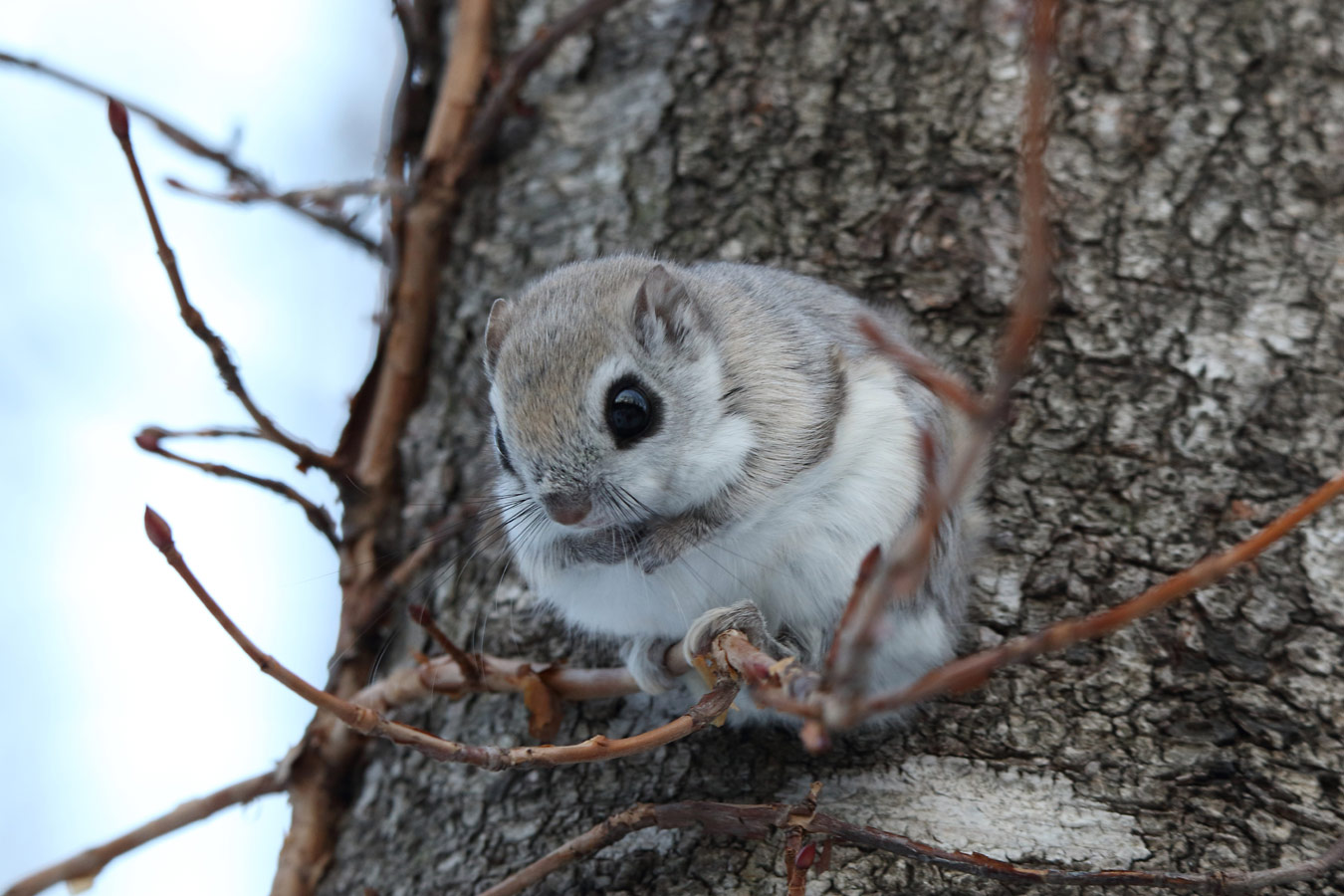
© Koudai Saito, Hokkaido, Japan
Highly Honored Junior
Ezomon monga or flying squirrel is a nocturnal animal, except for when it is mating. Because it does not usually come out during the day, I waited three months for the mating season and was finally able to take this shot. This was taken in March when the weather is often freezing and causes very cold fingers. The ezomon monga is an important subject and has been a big turning point in my experience as a photographer.
Nature’s Best Photography Asia
Share:








